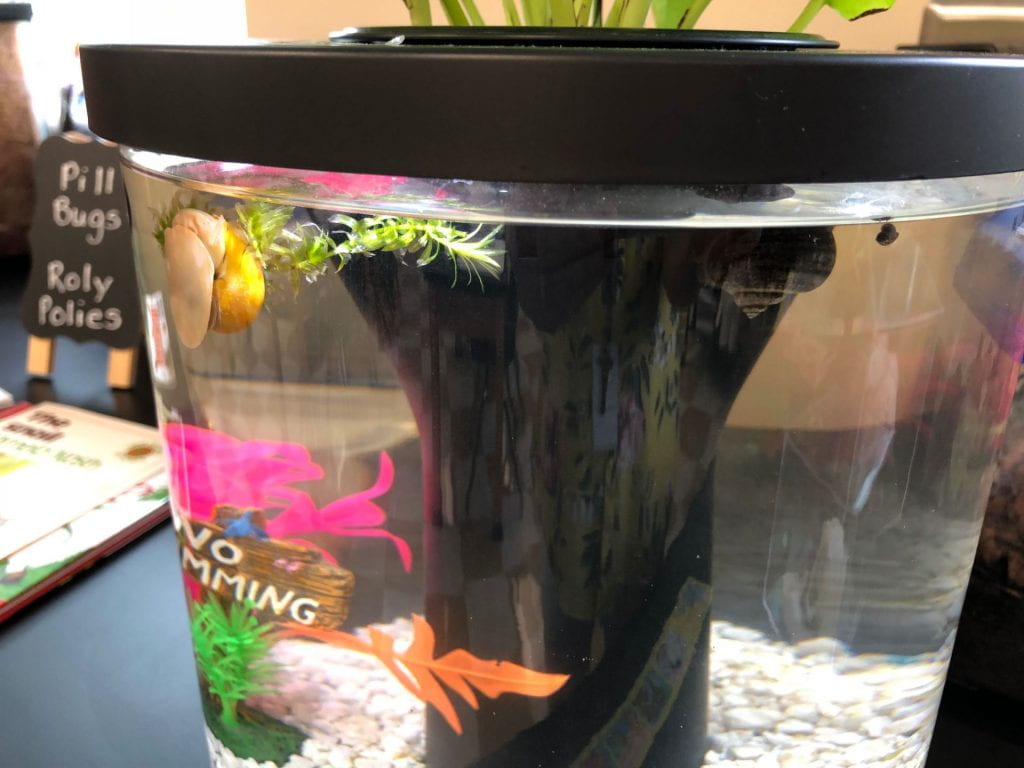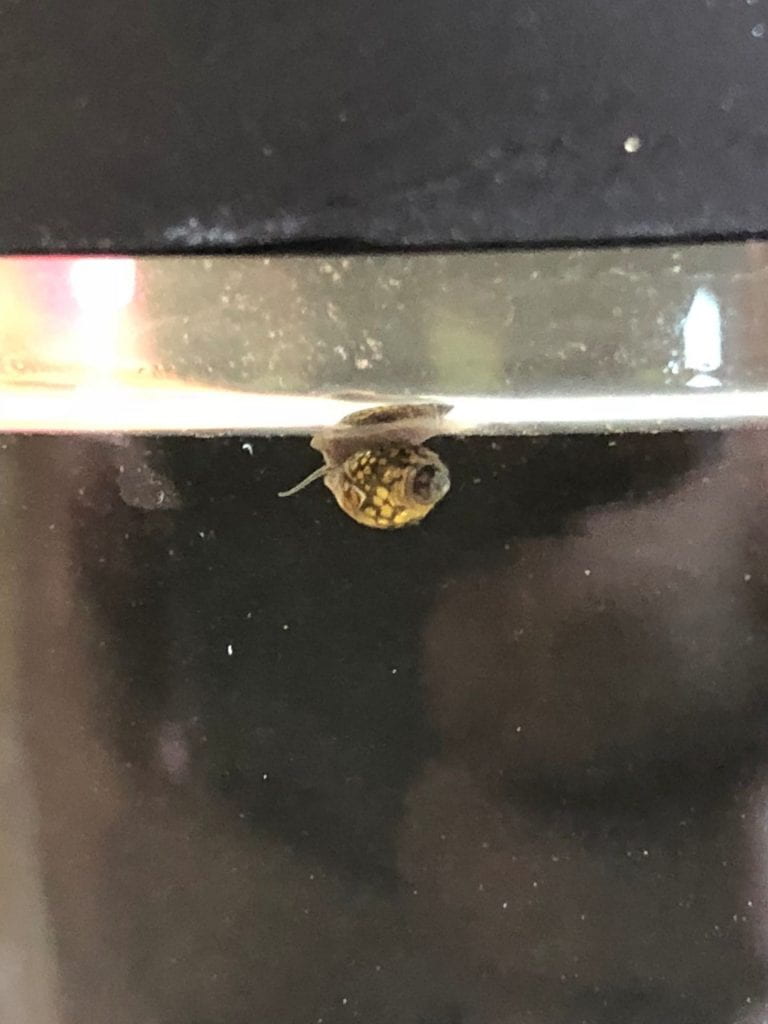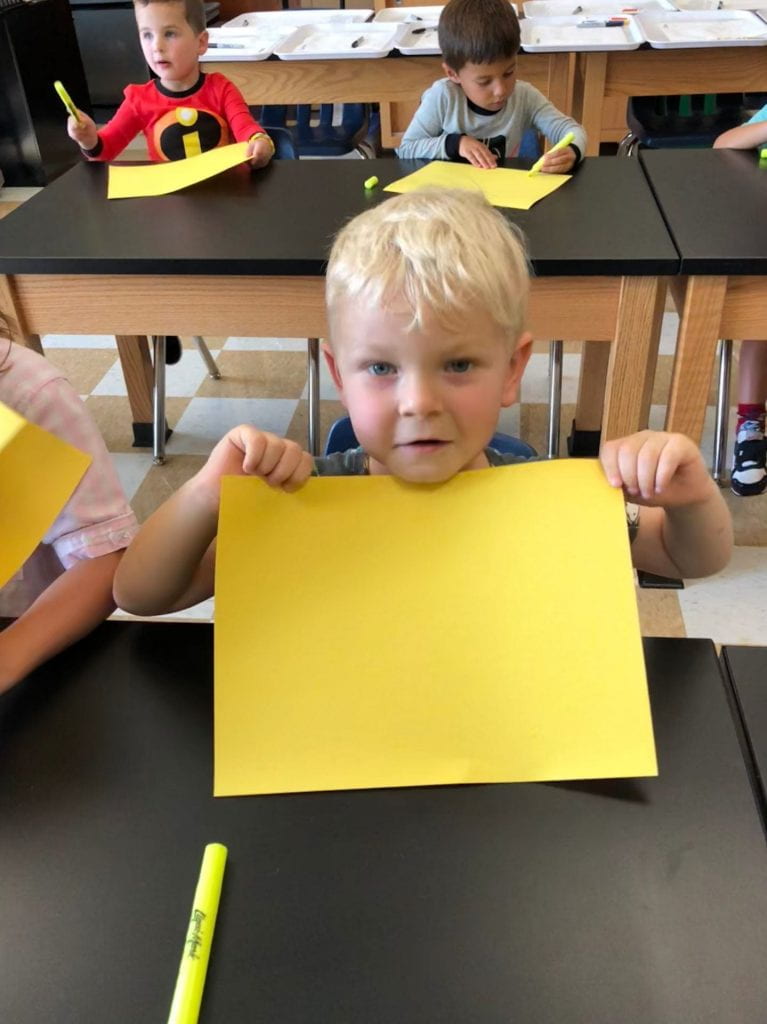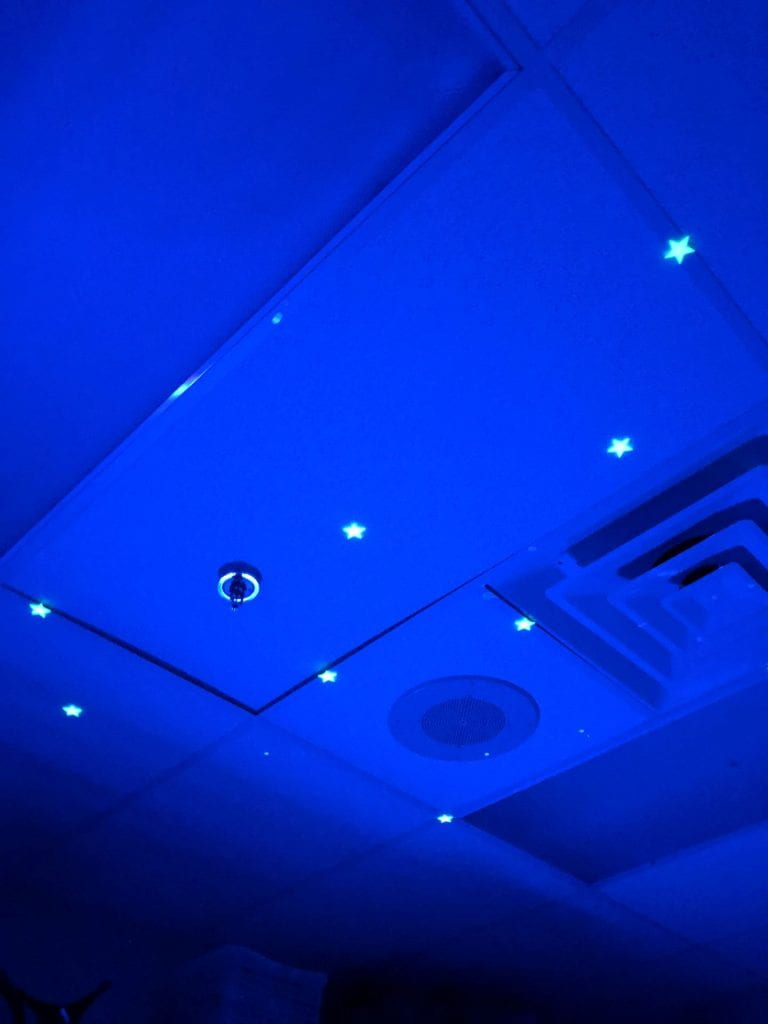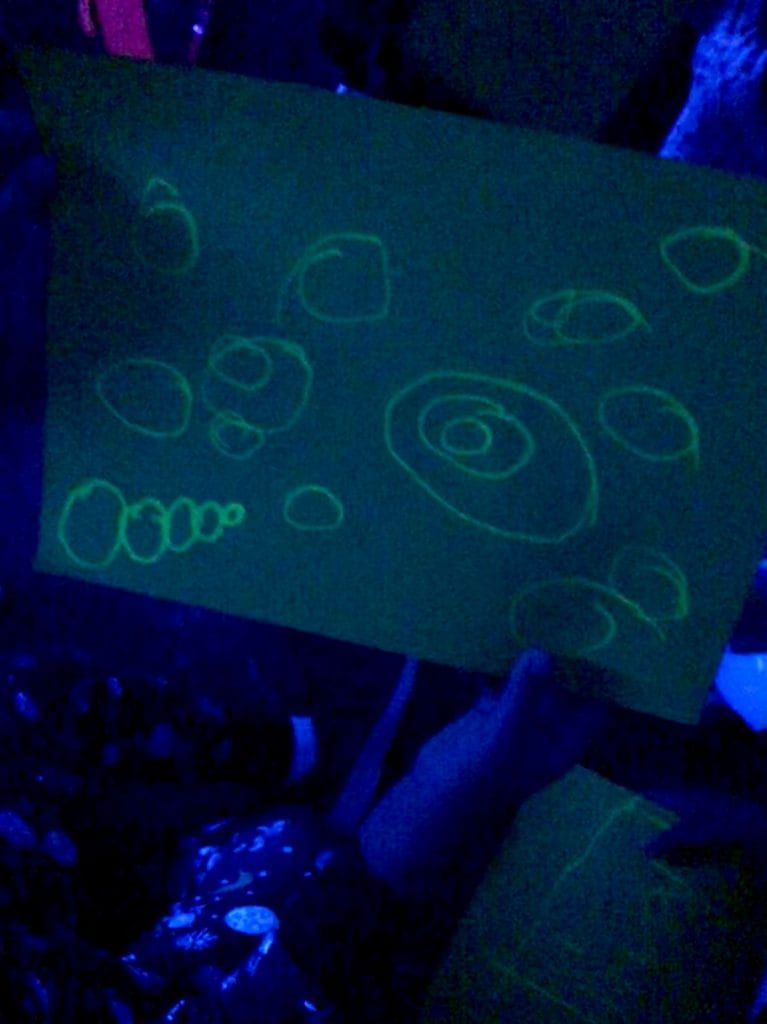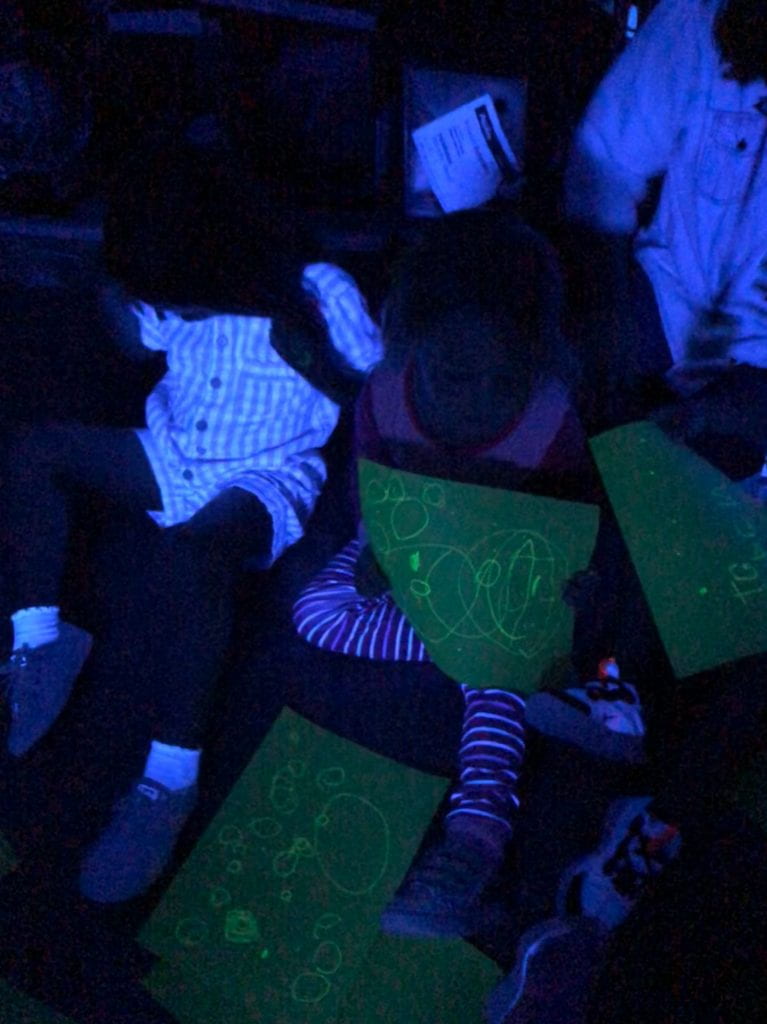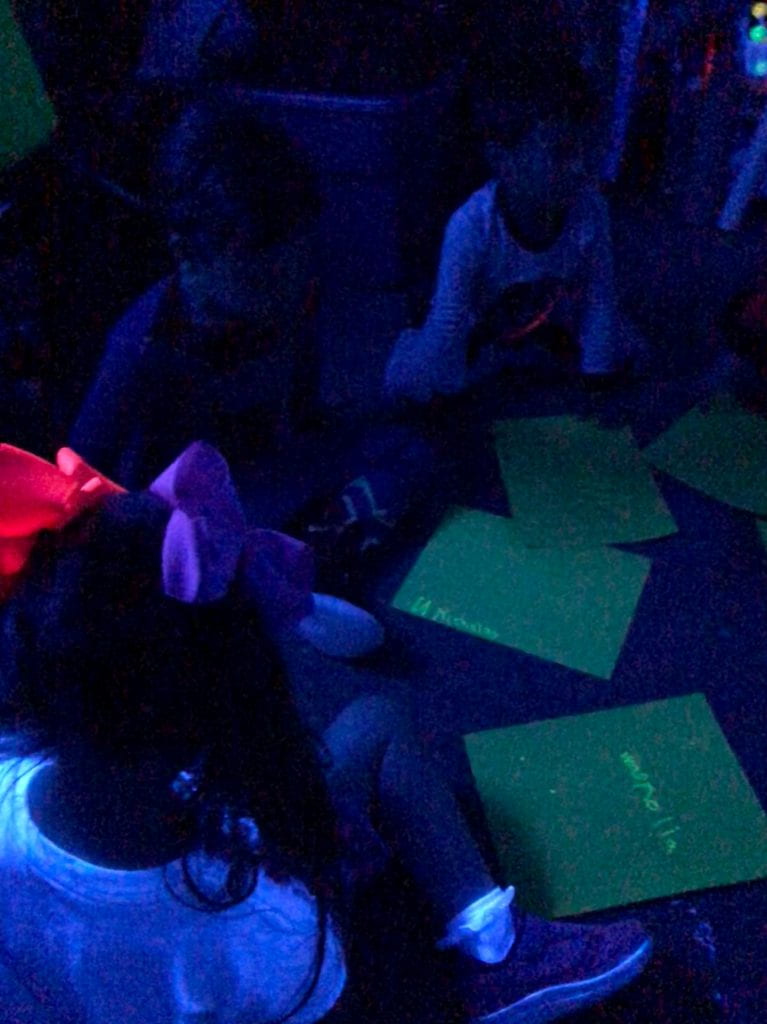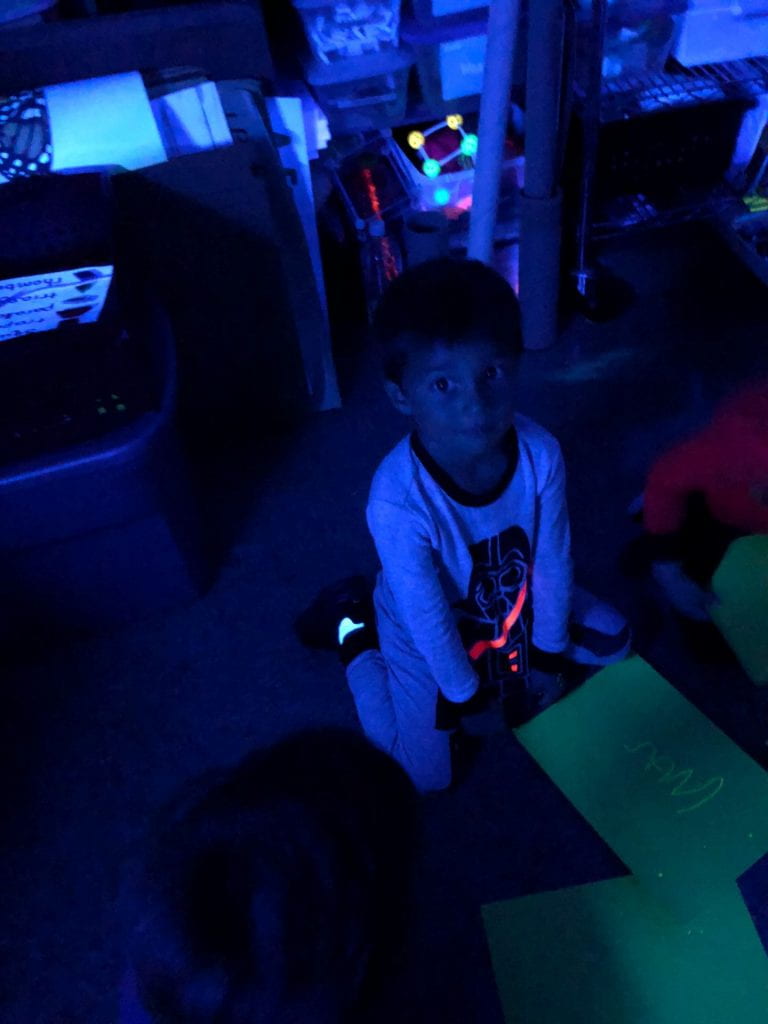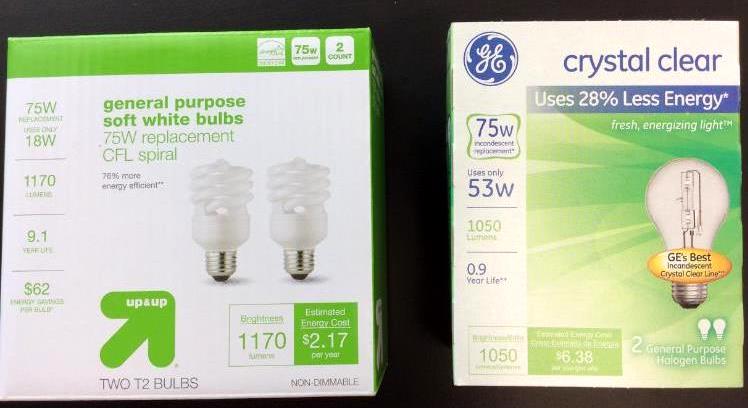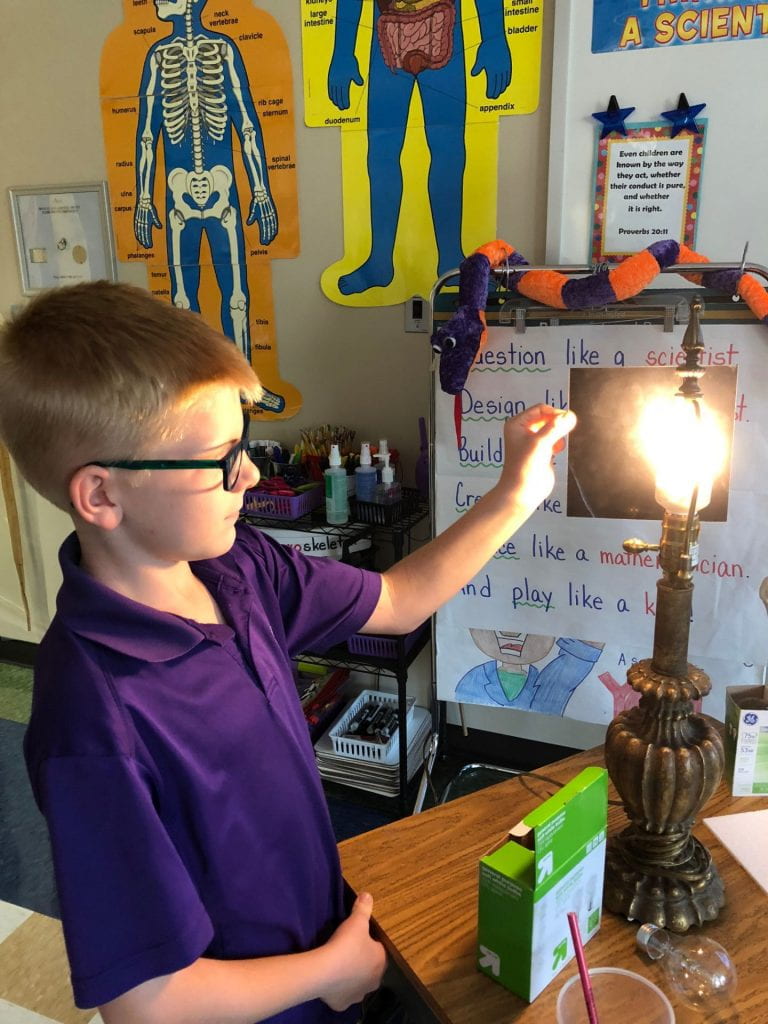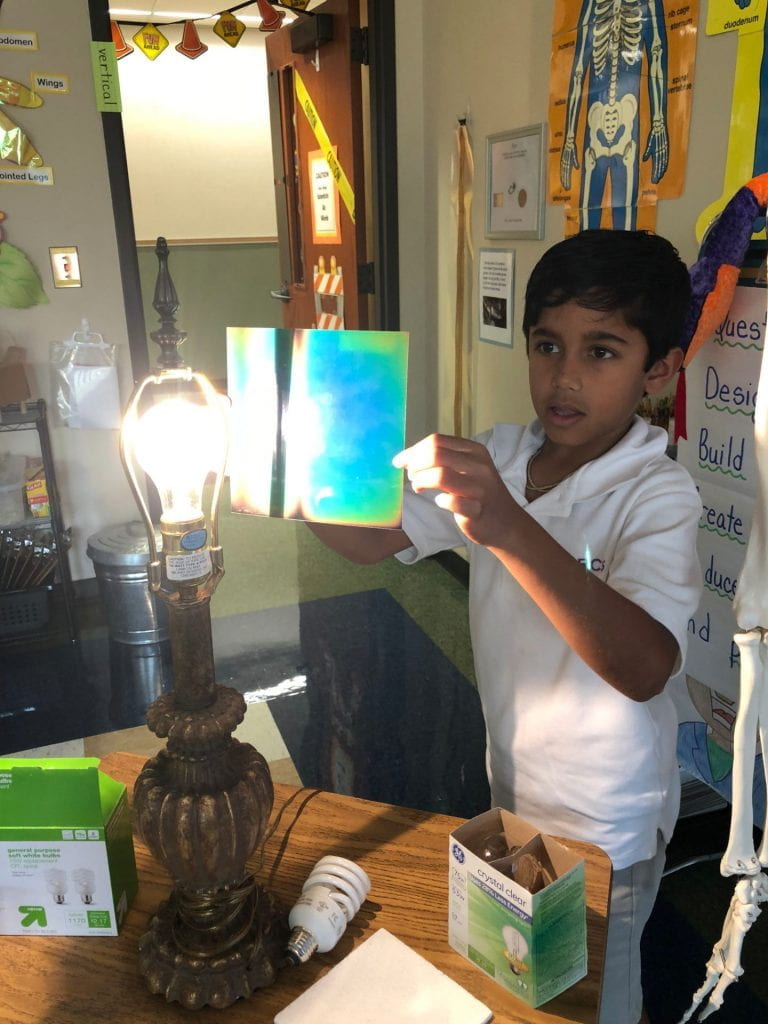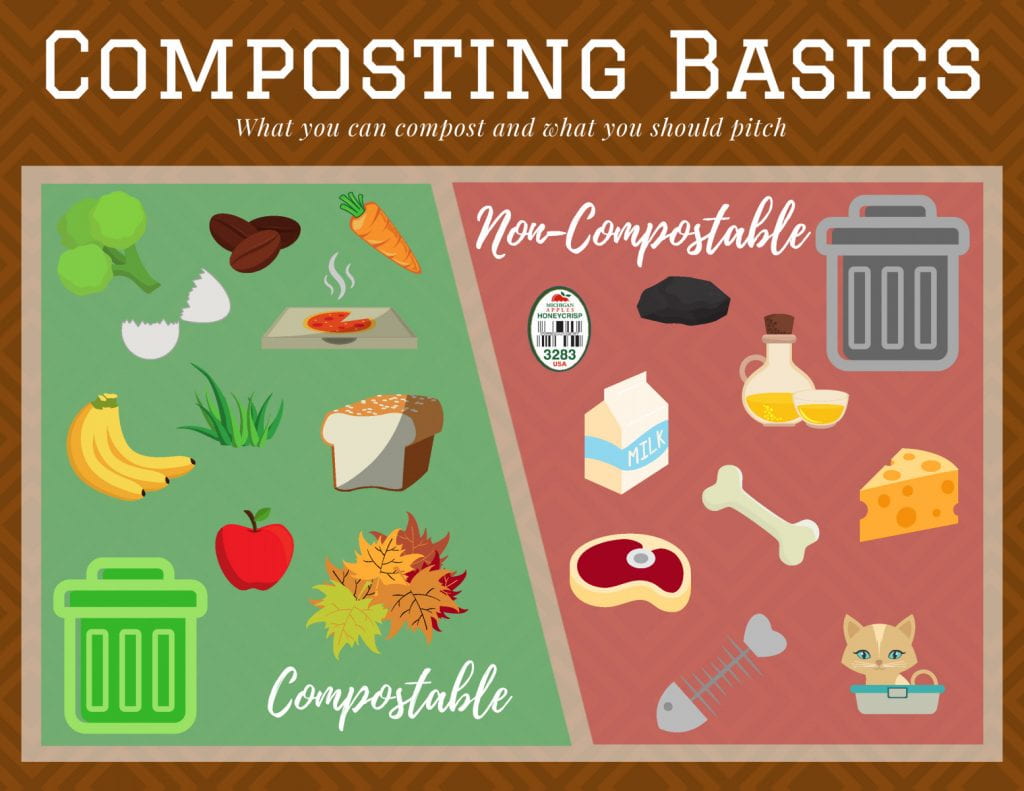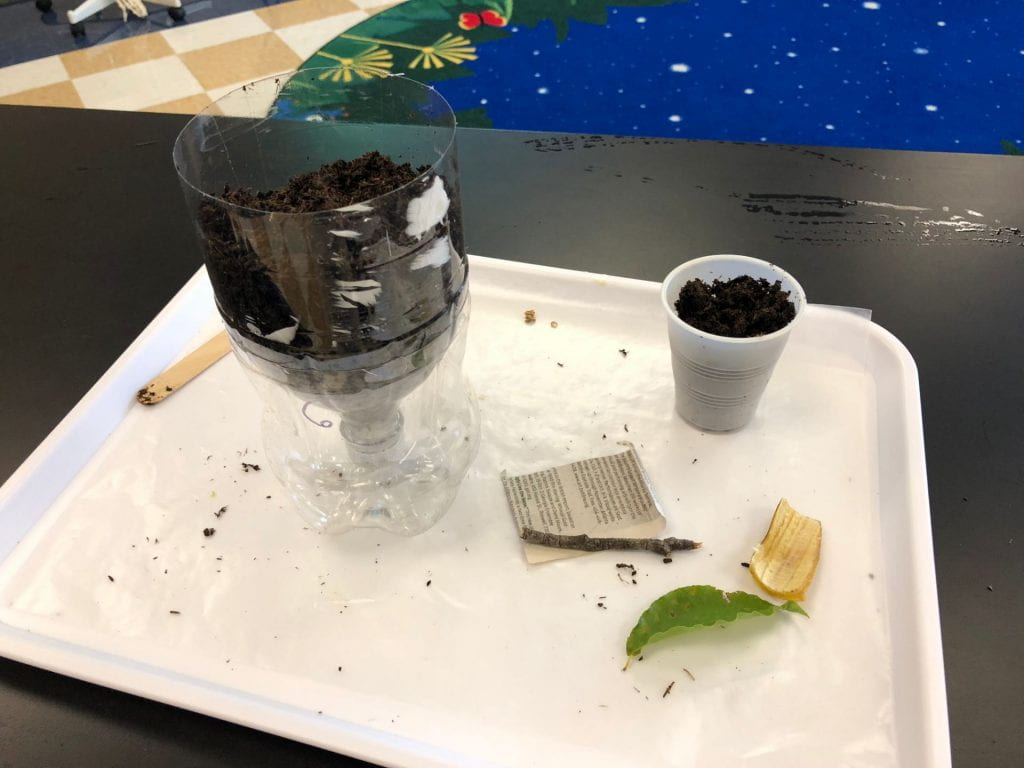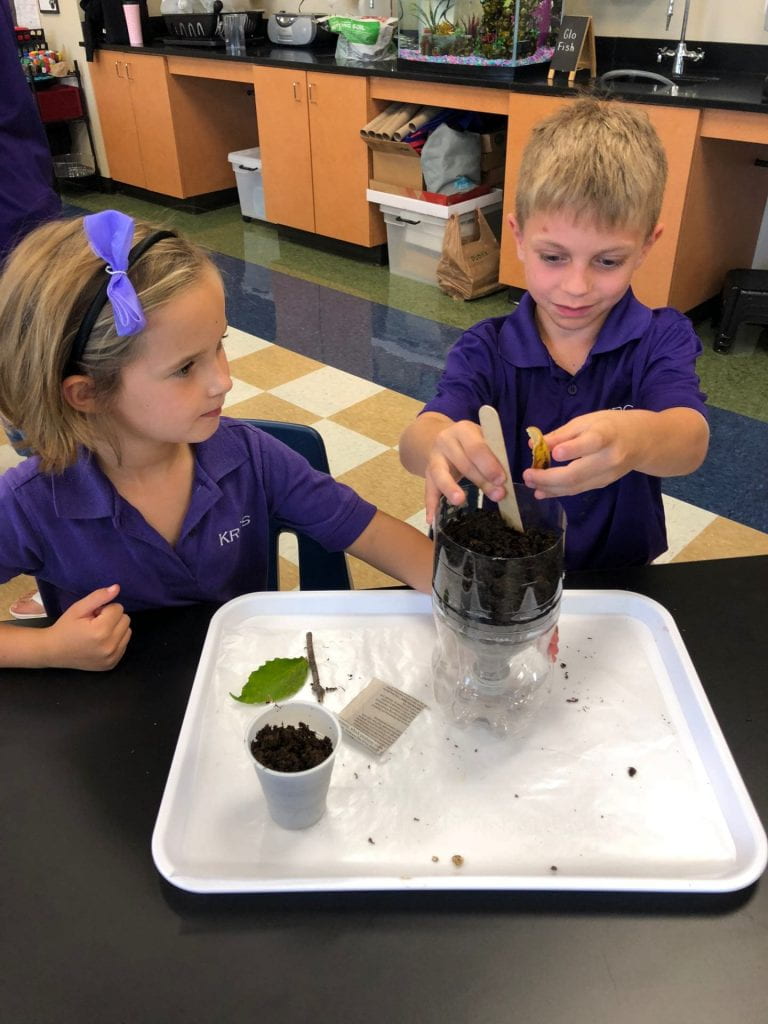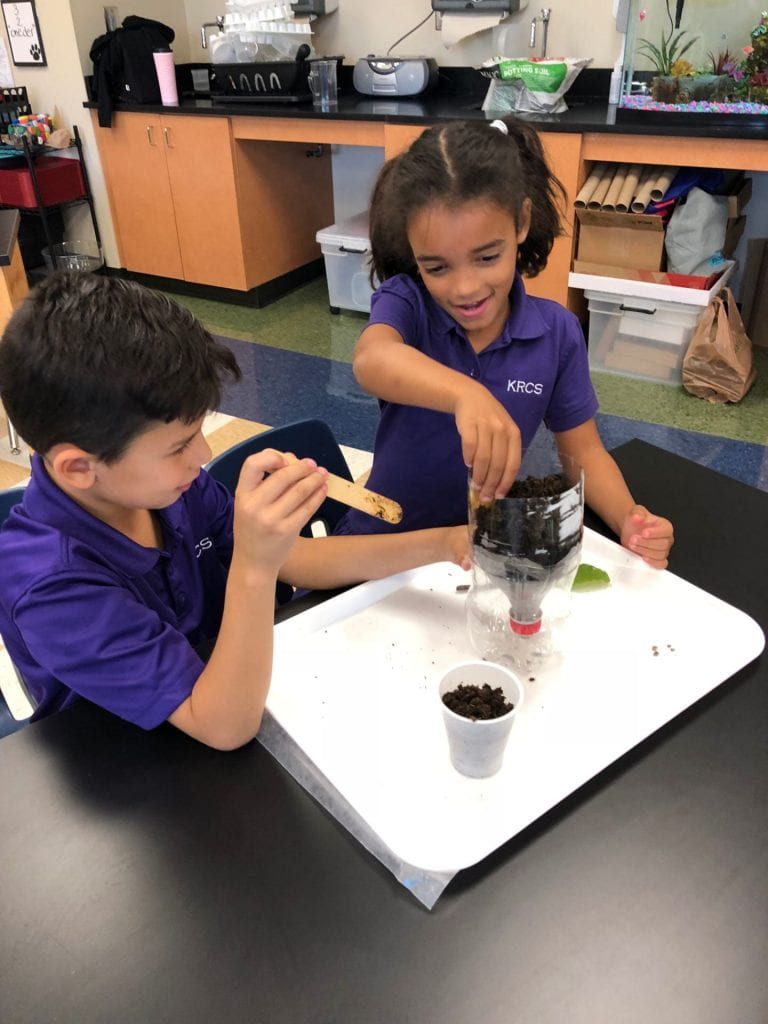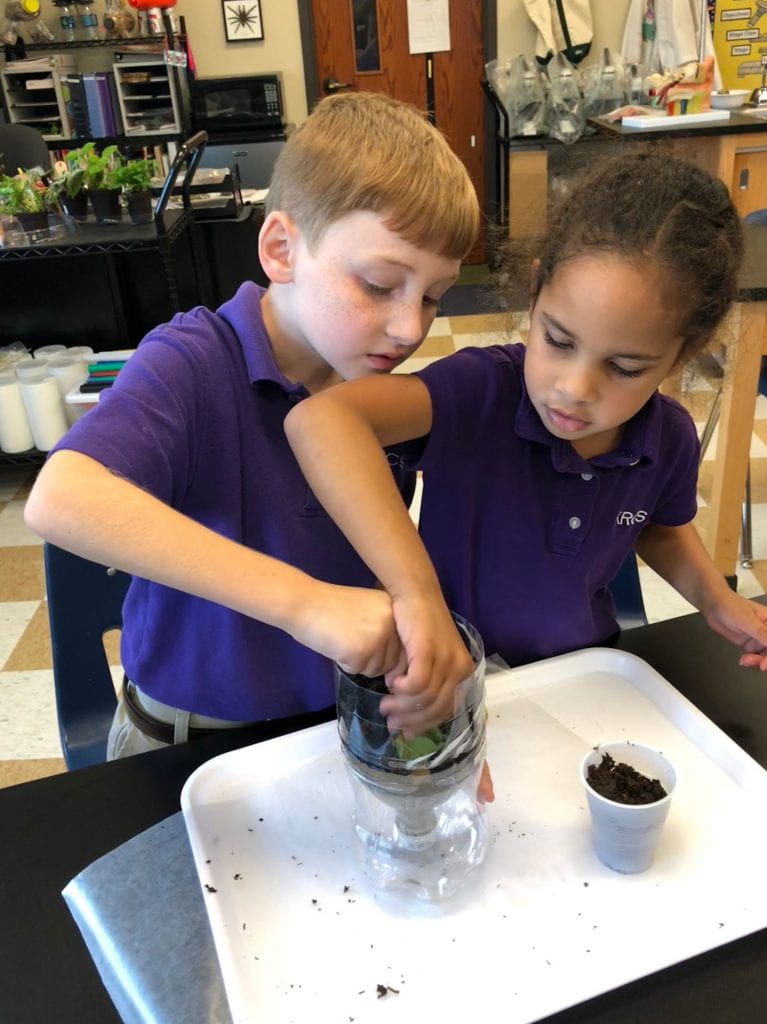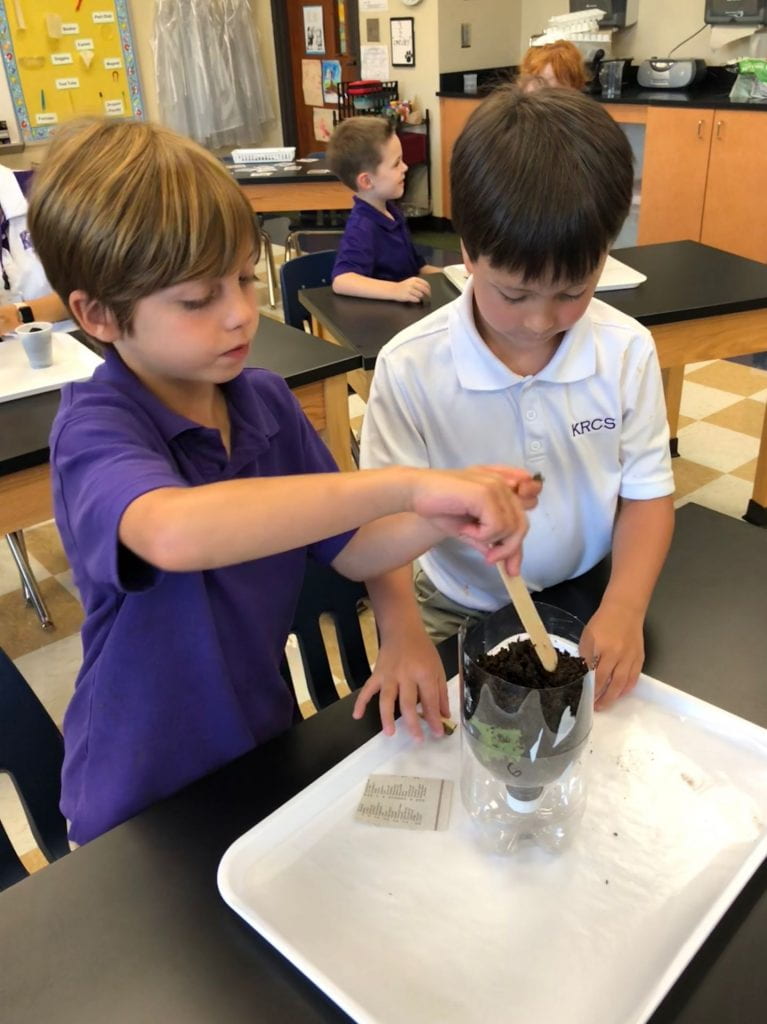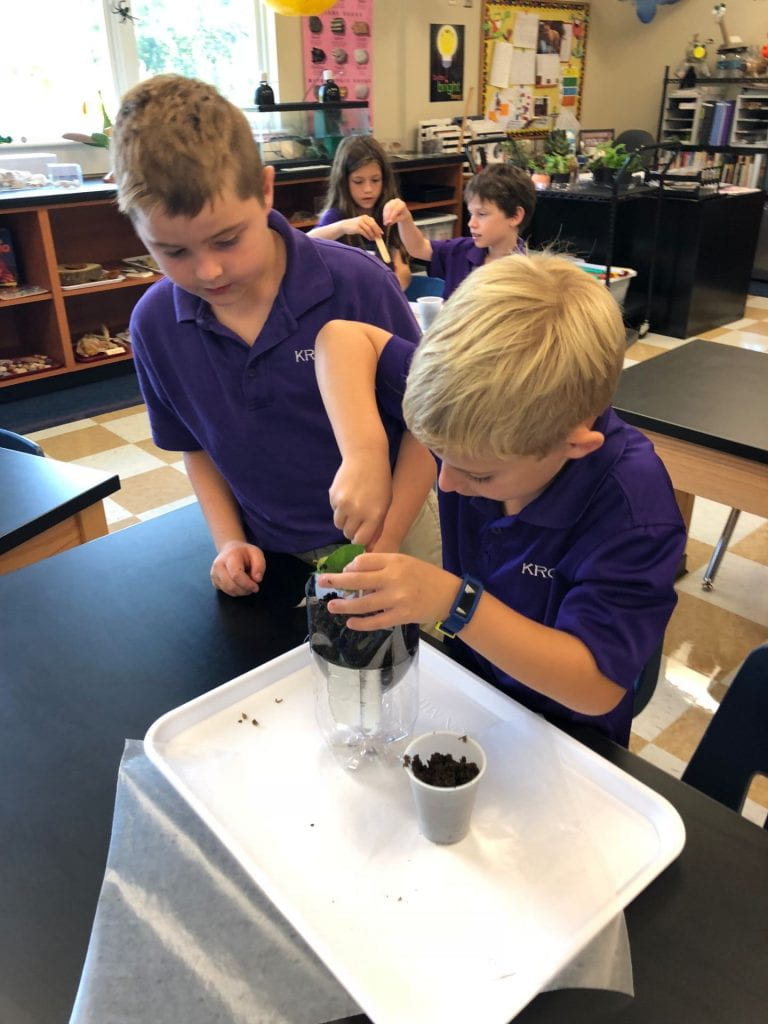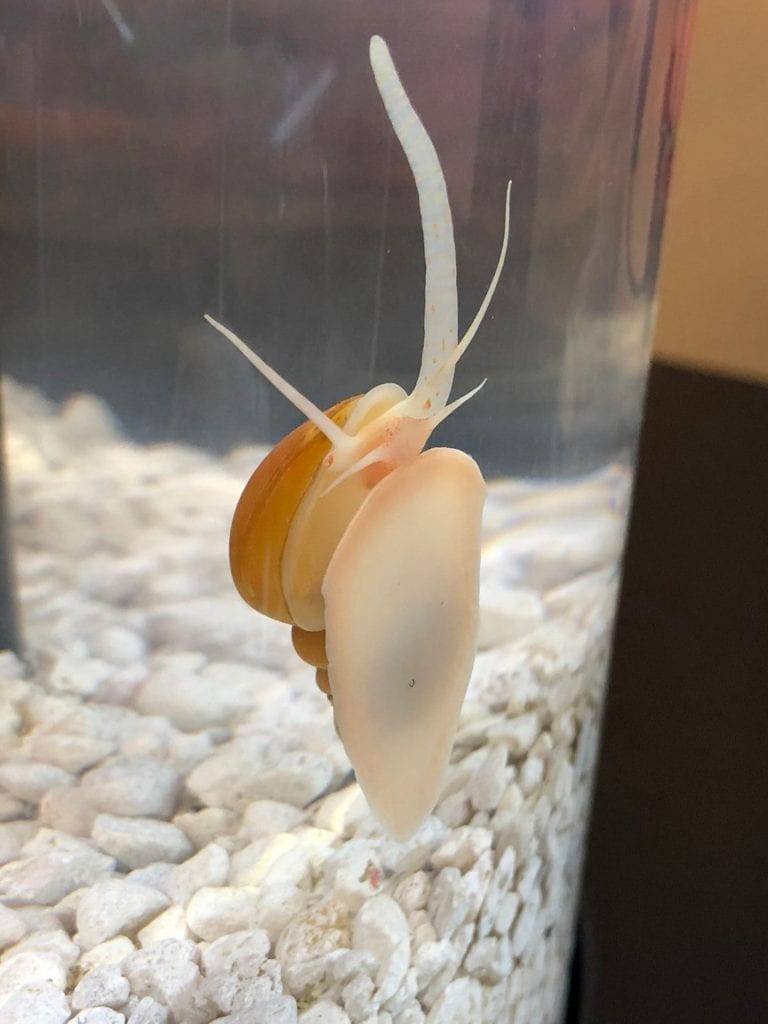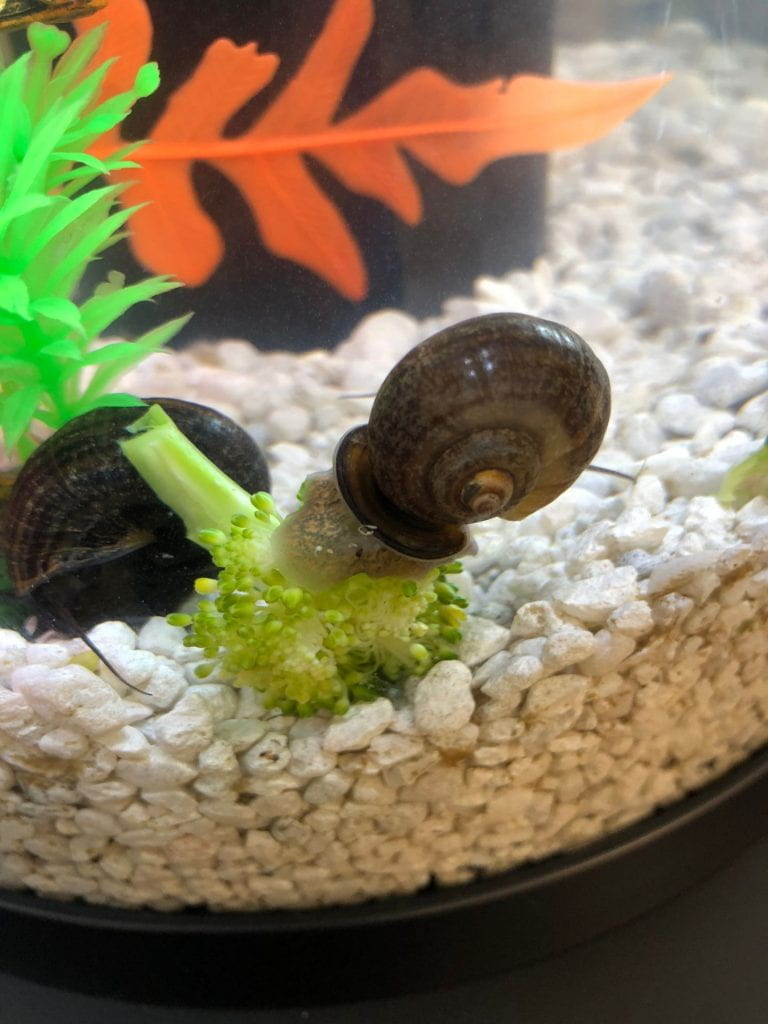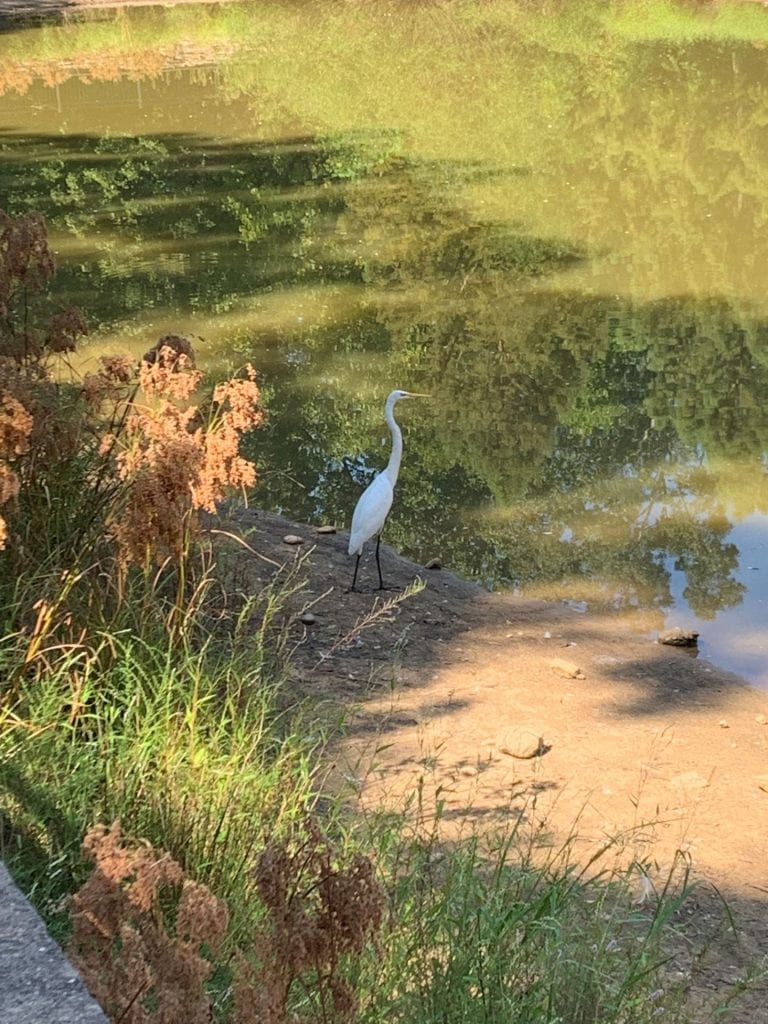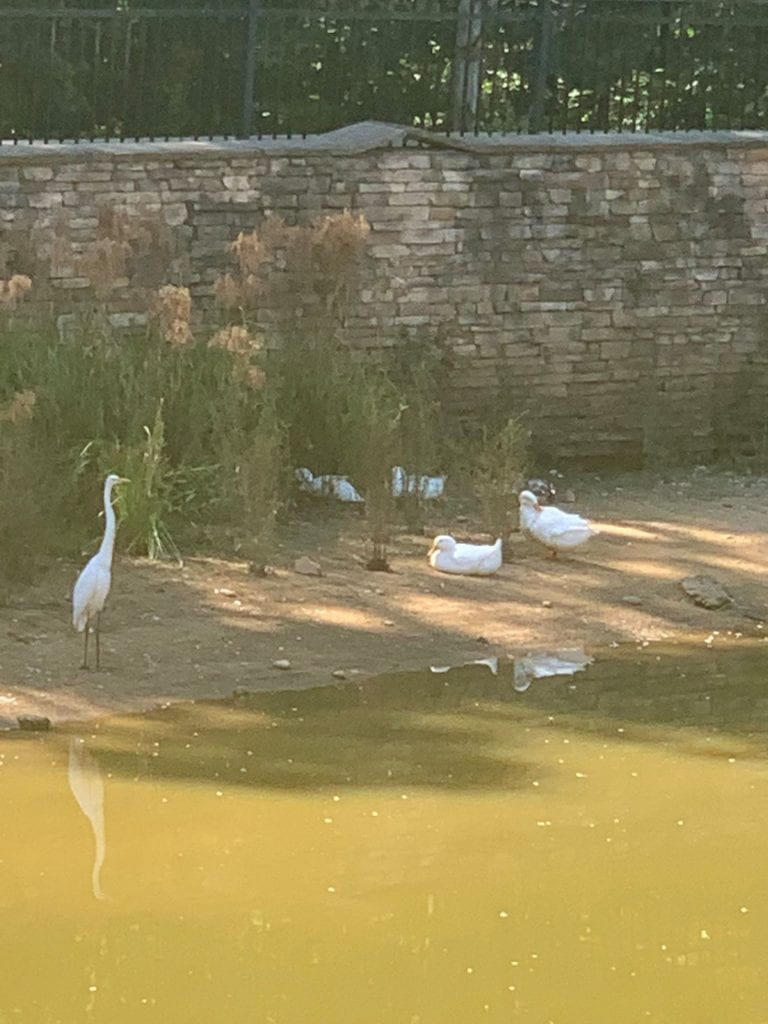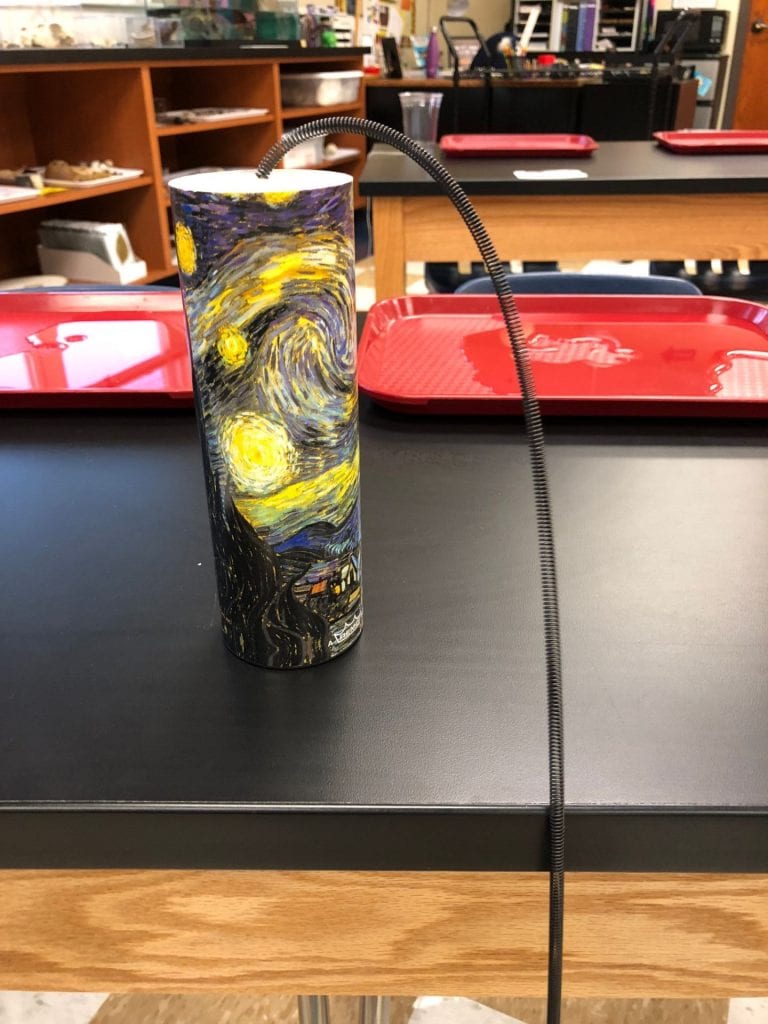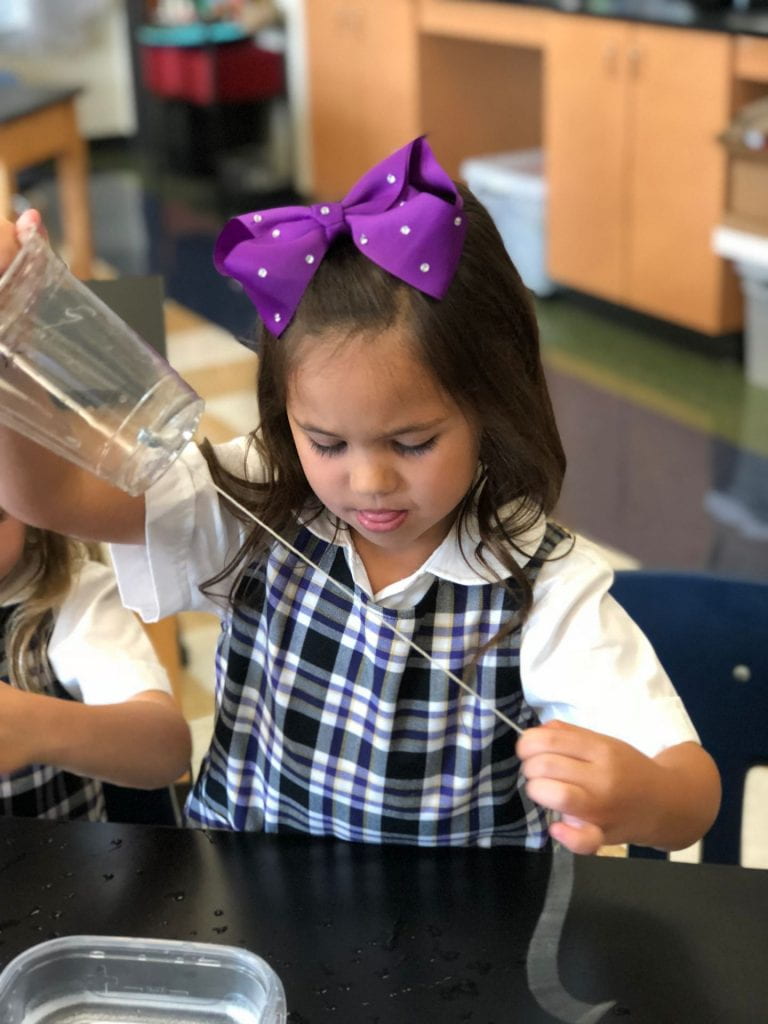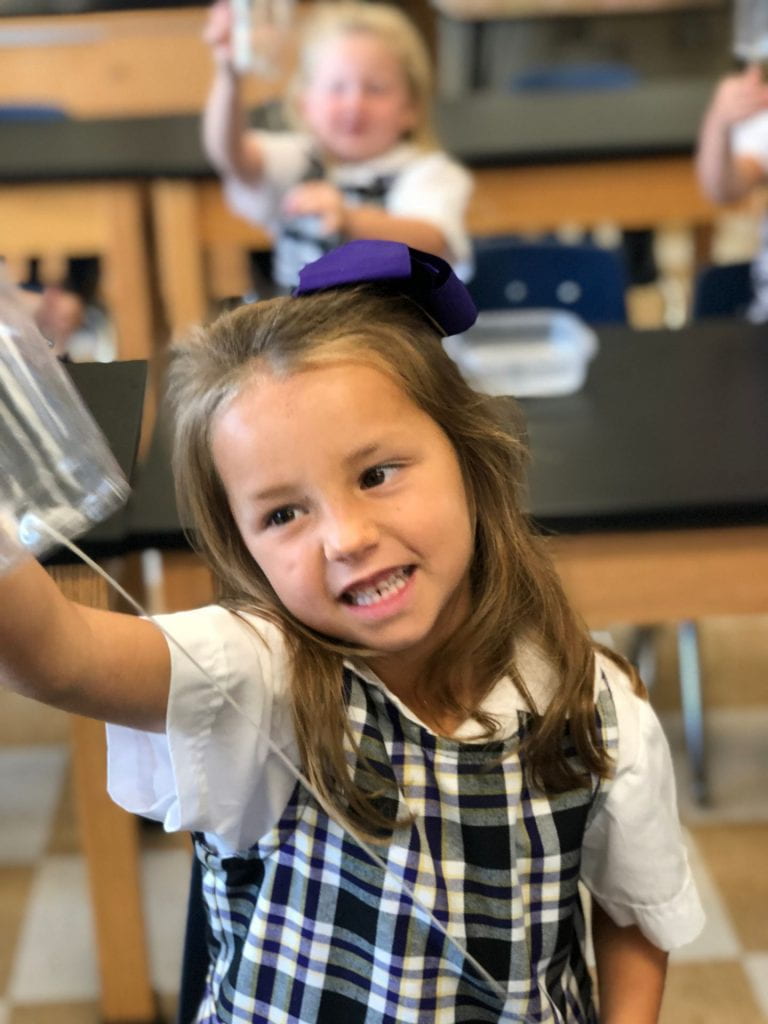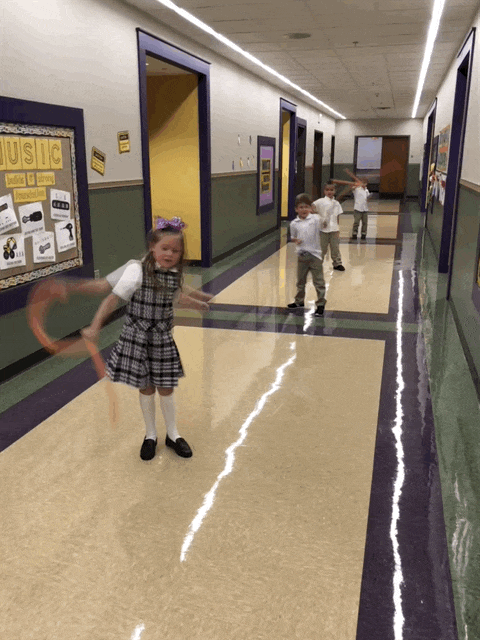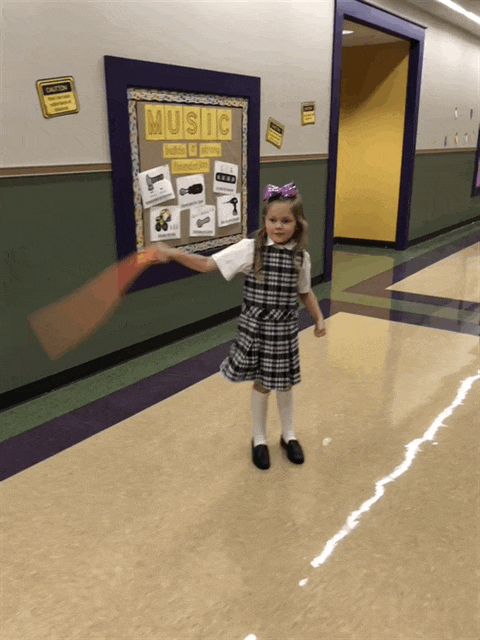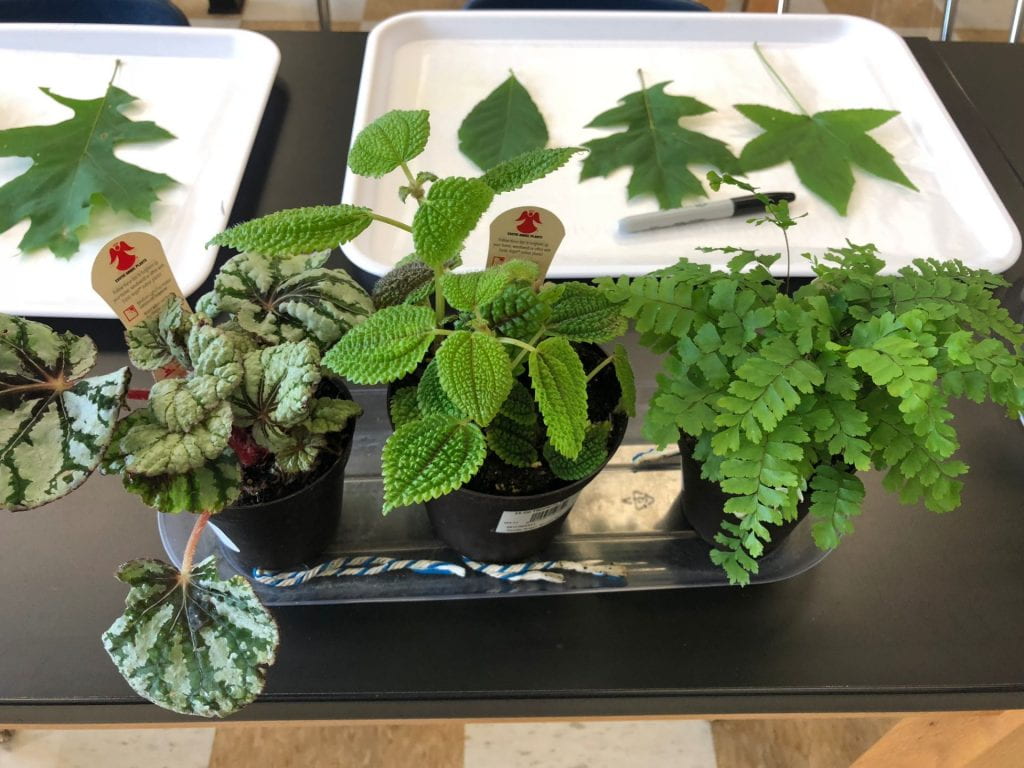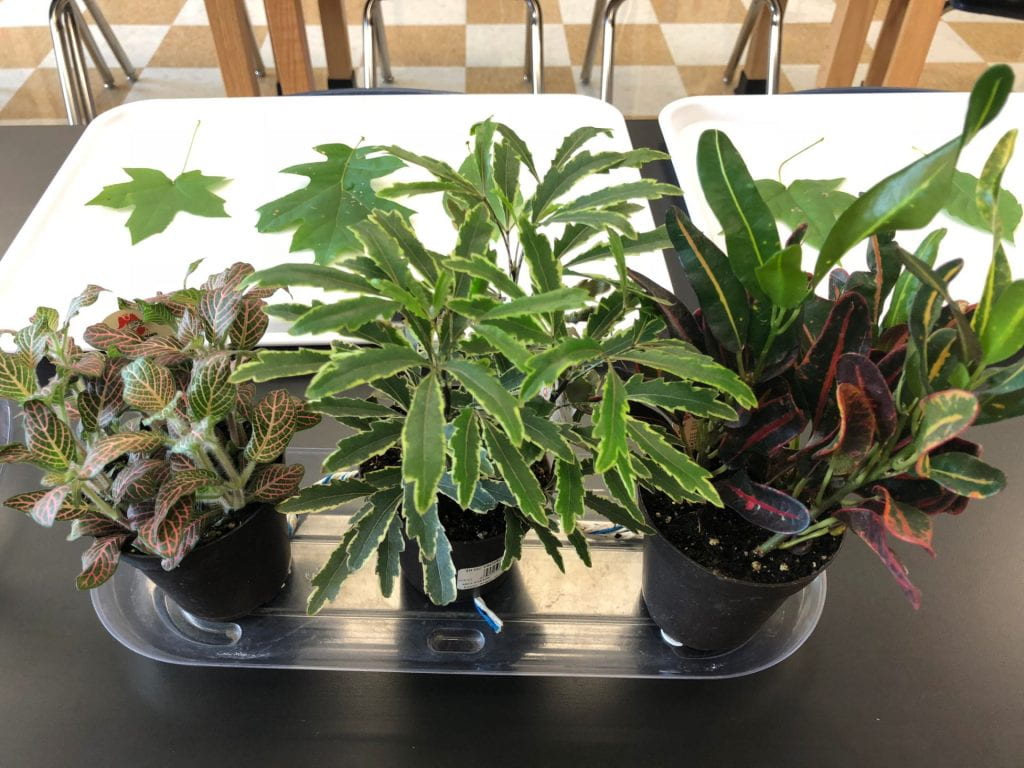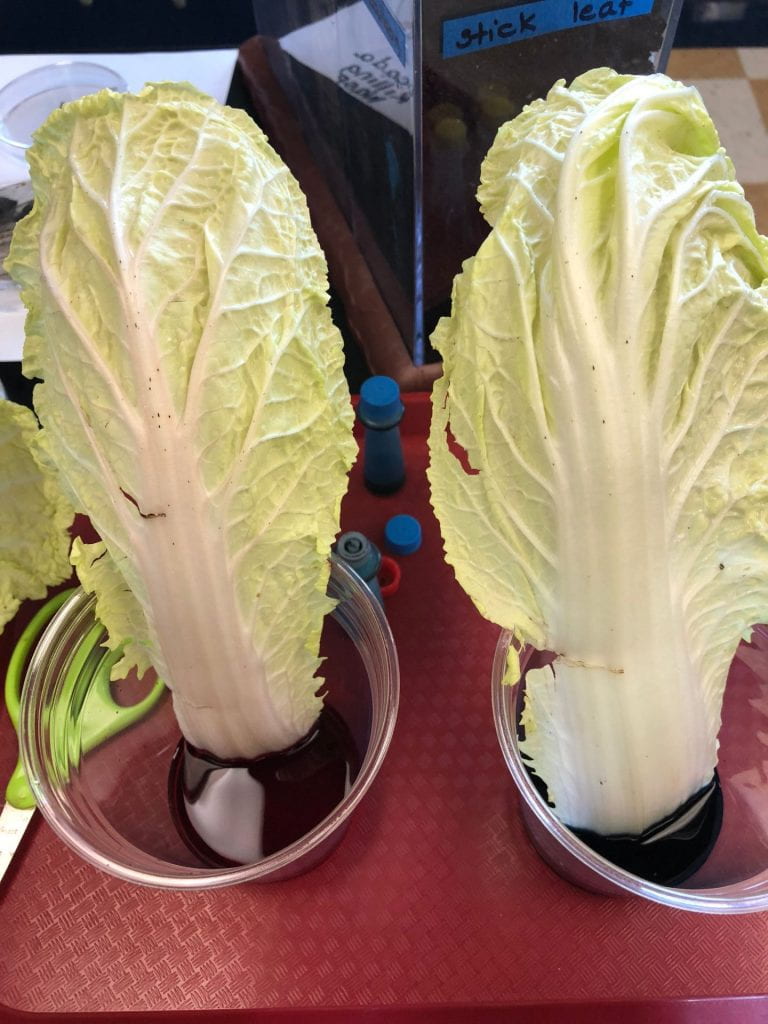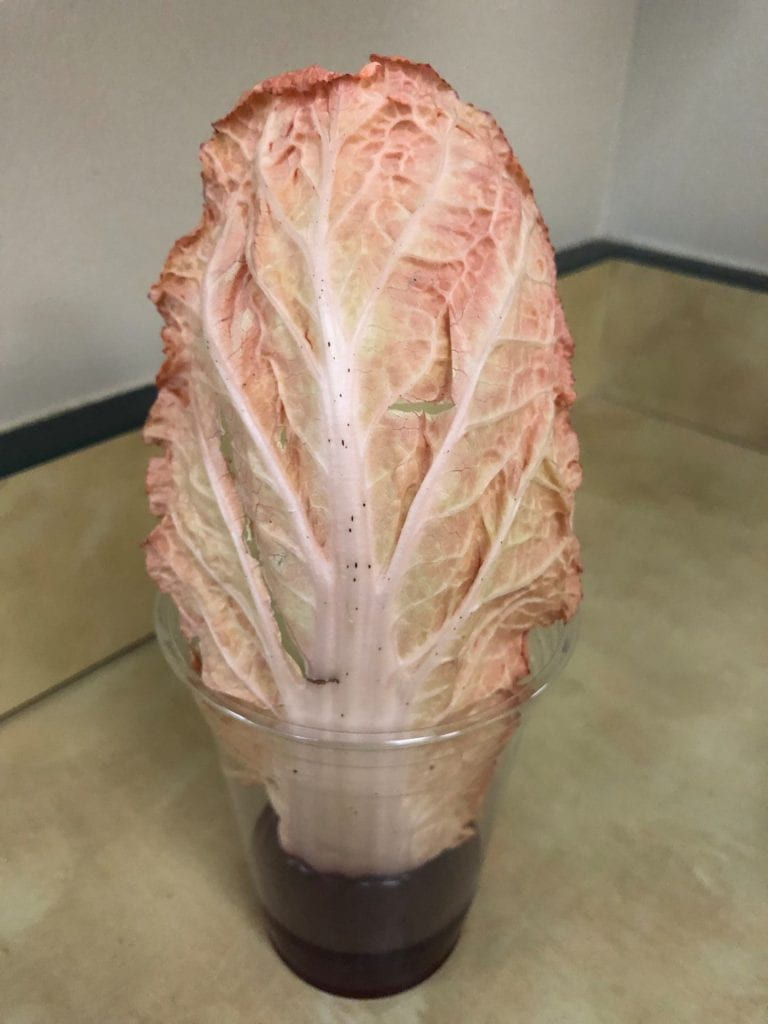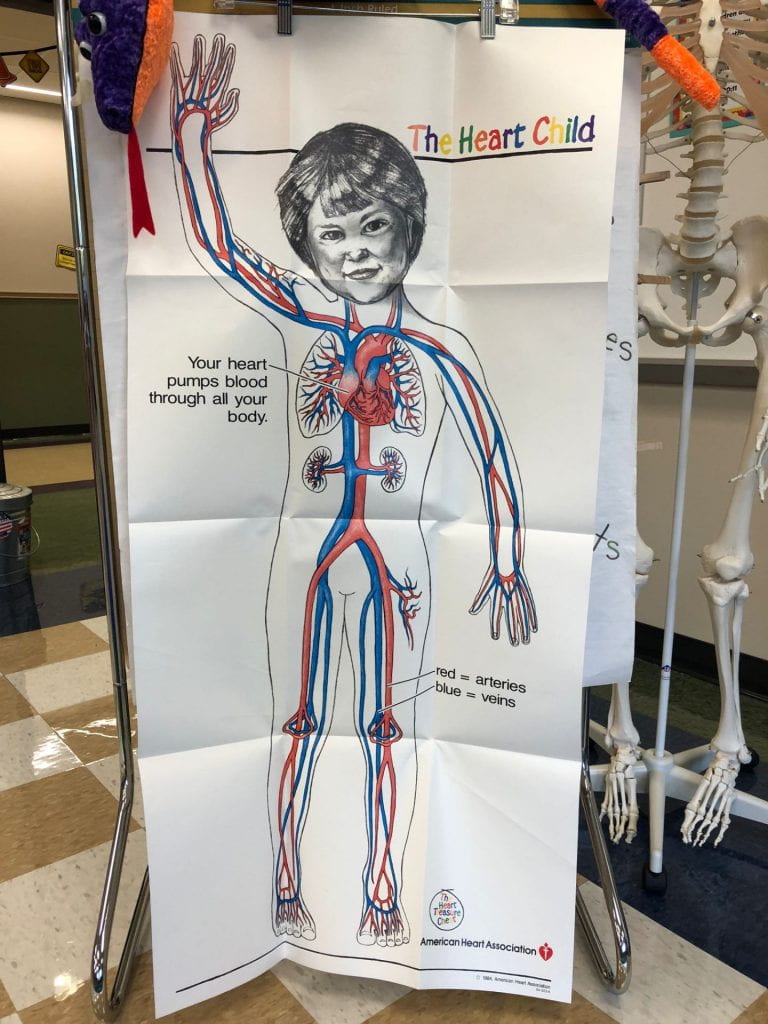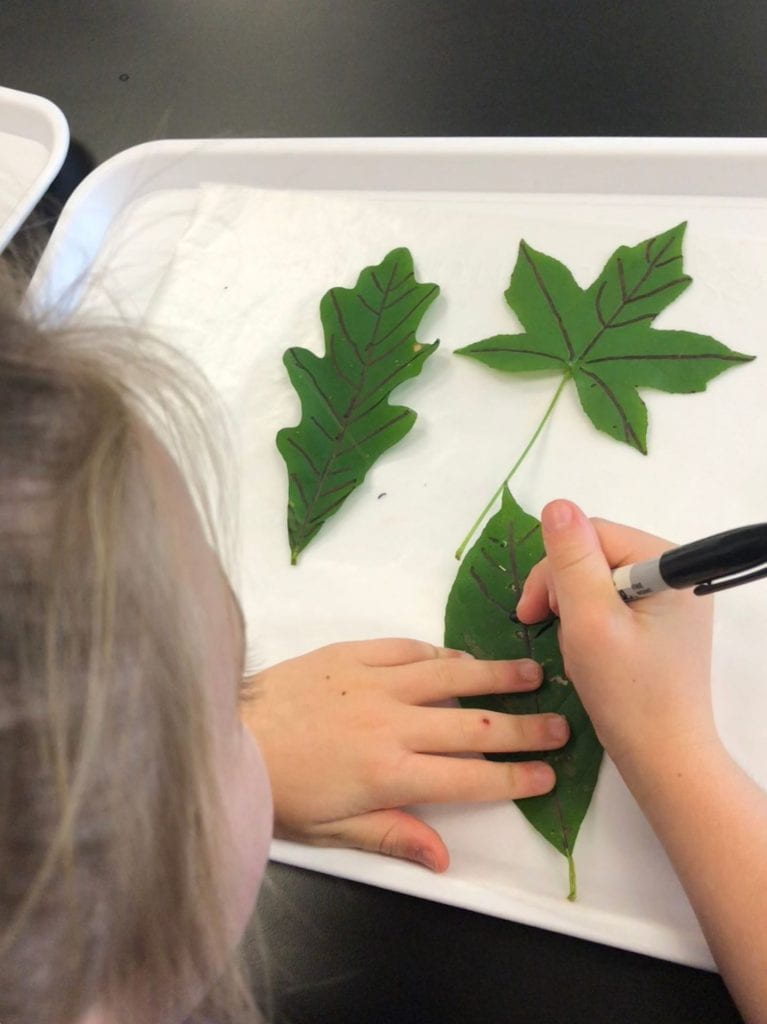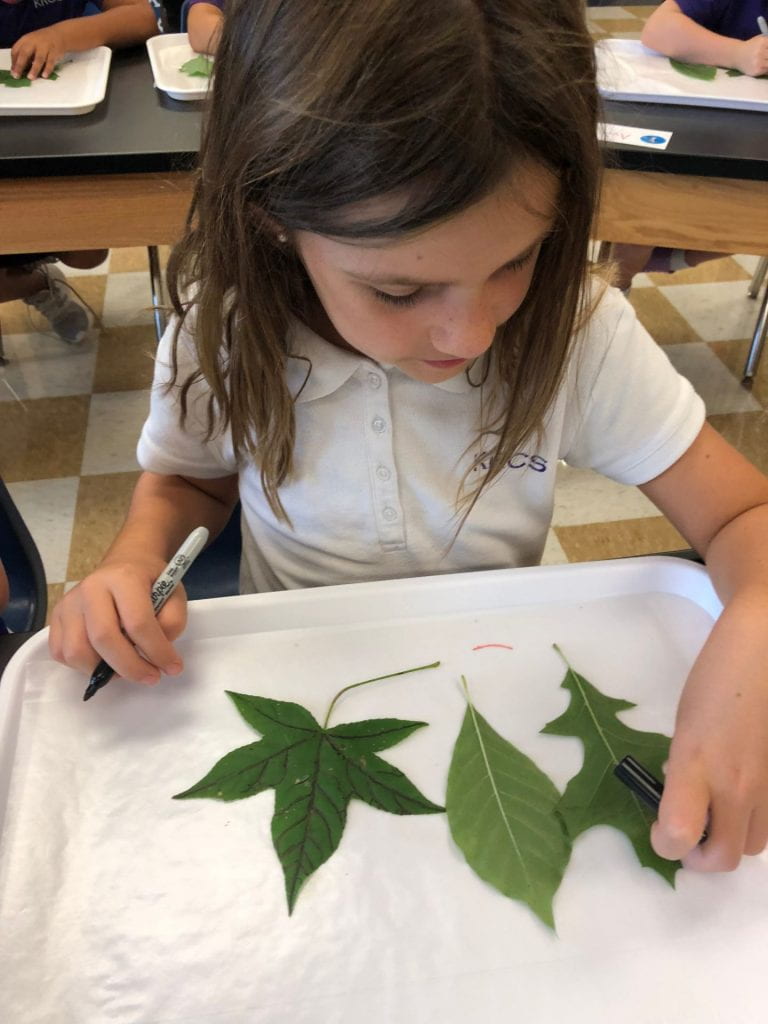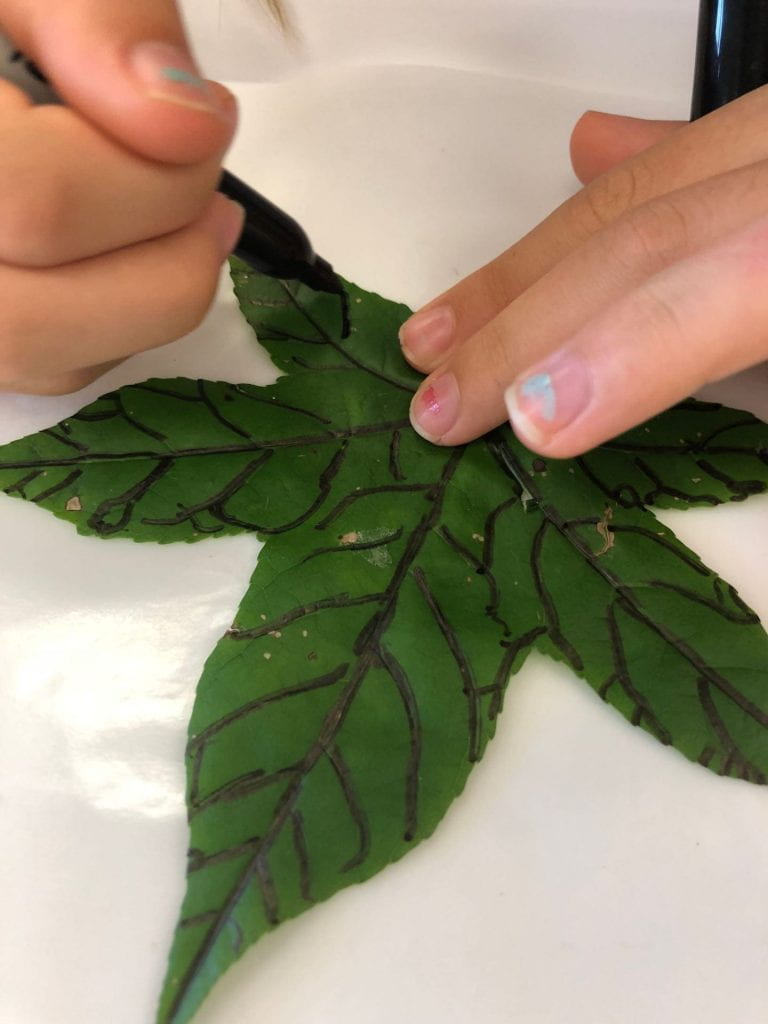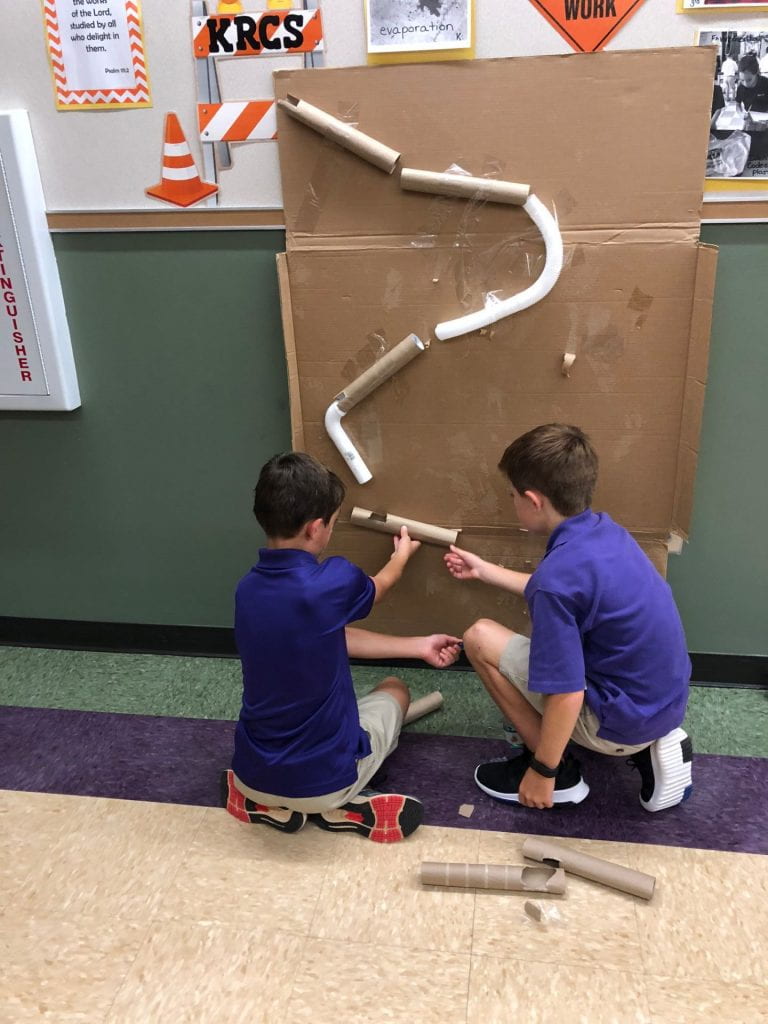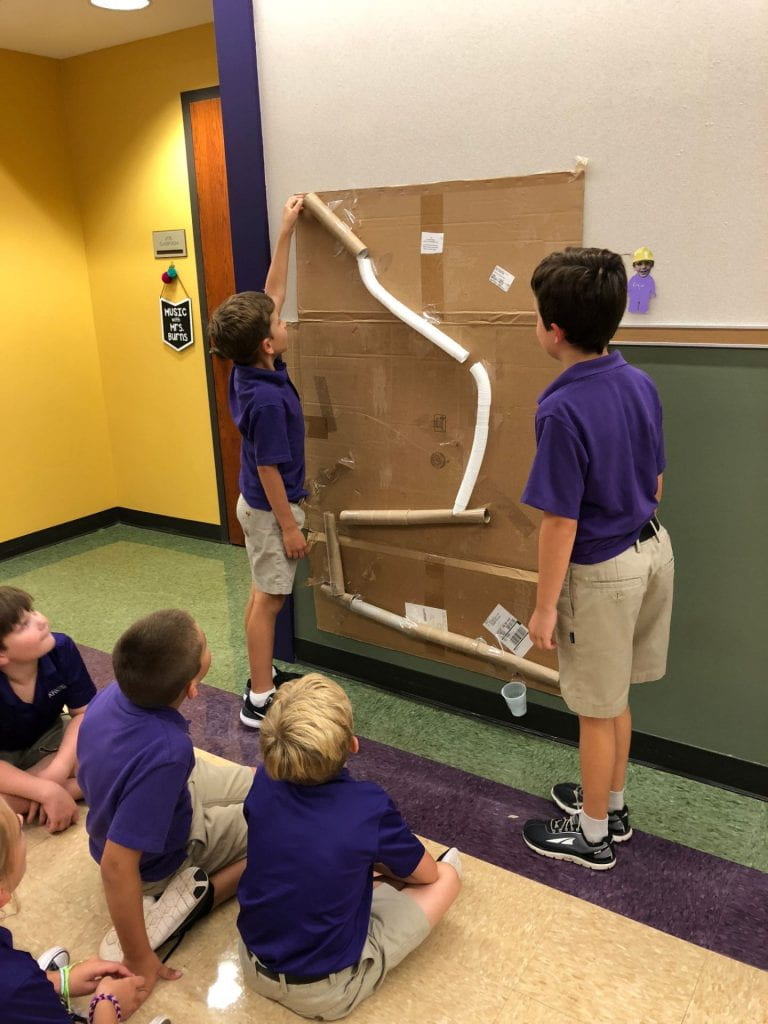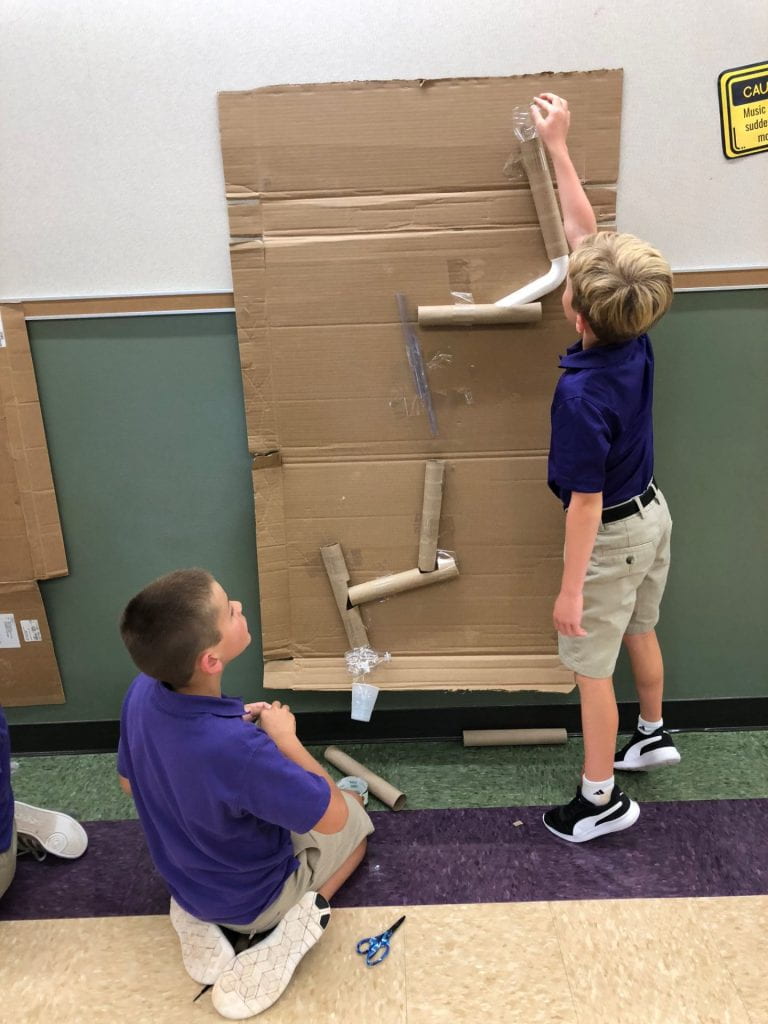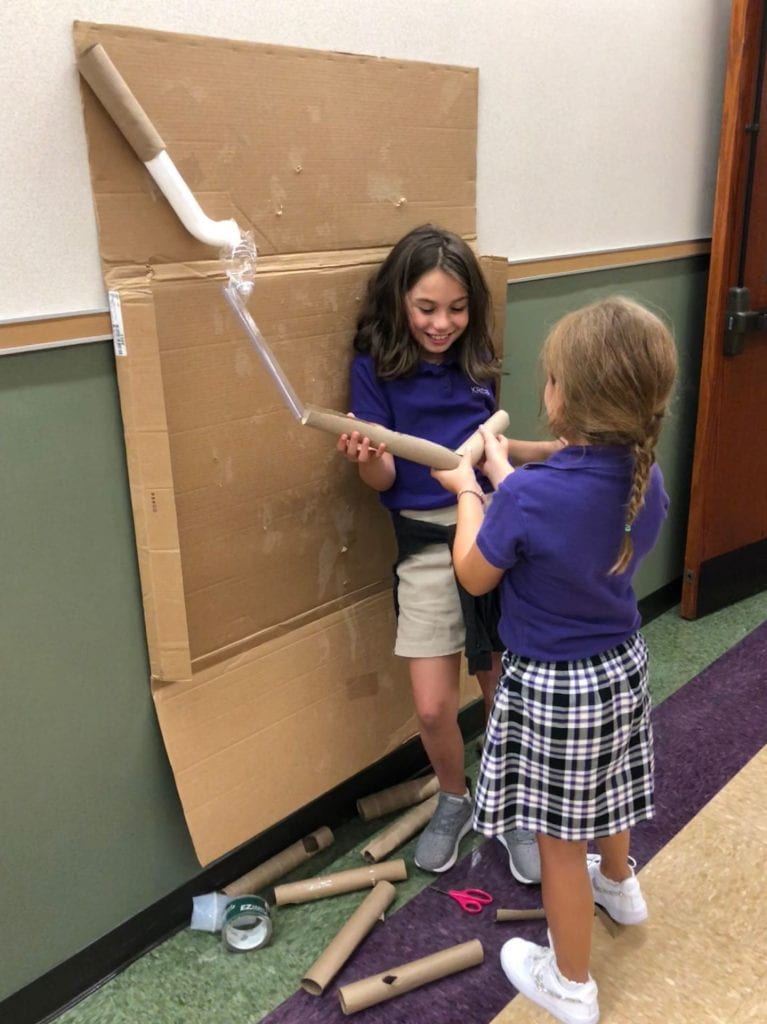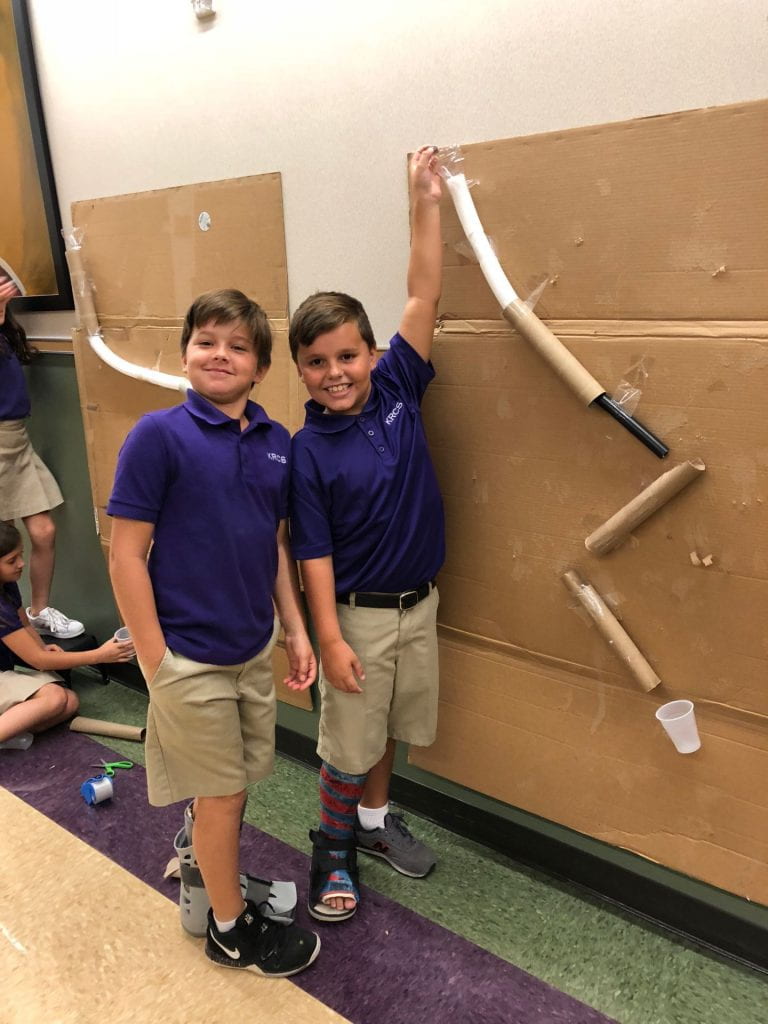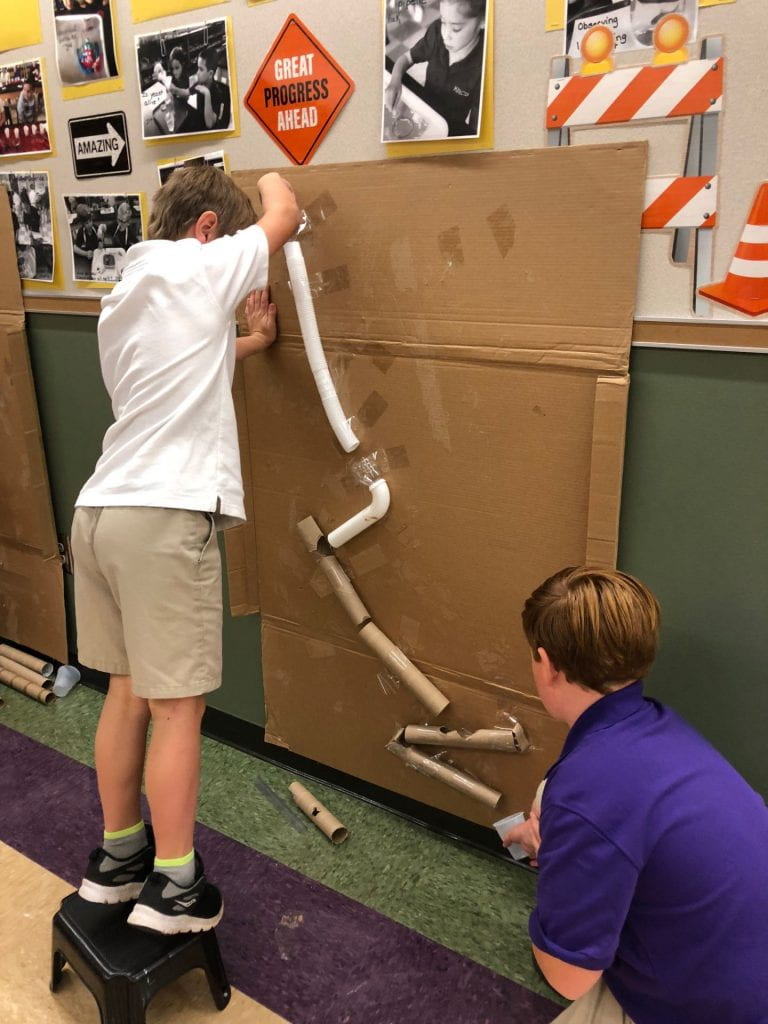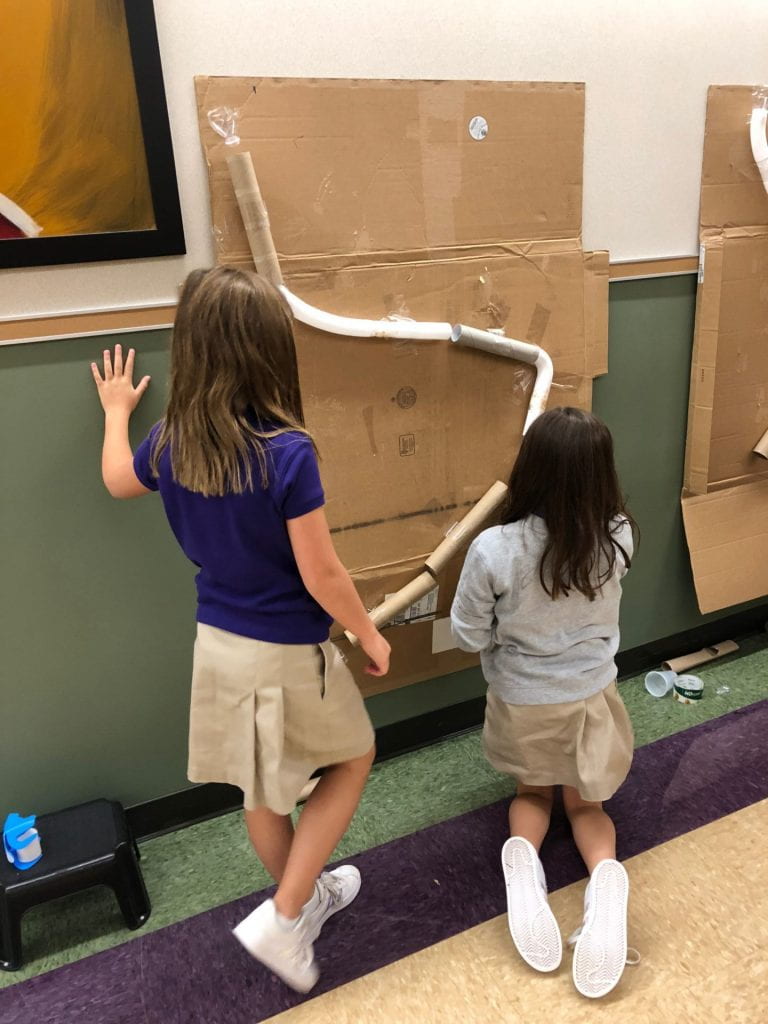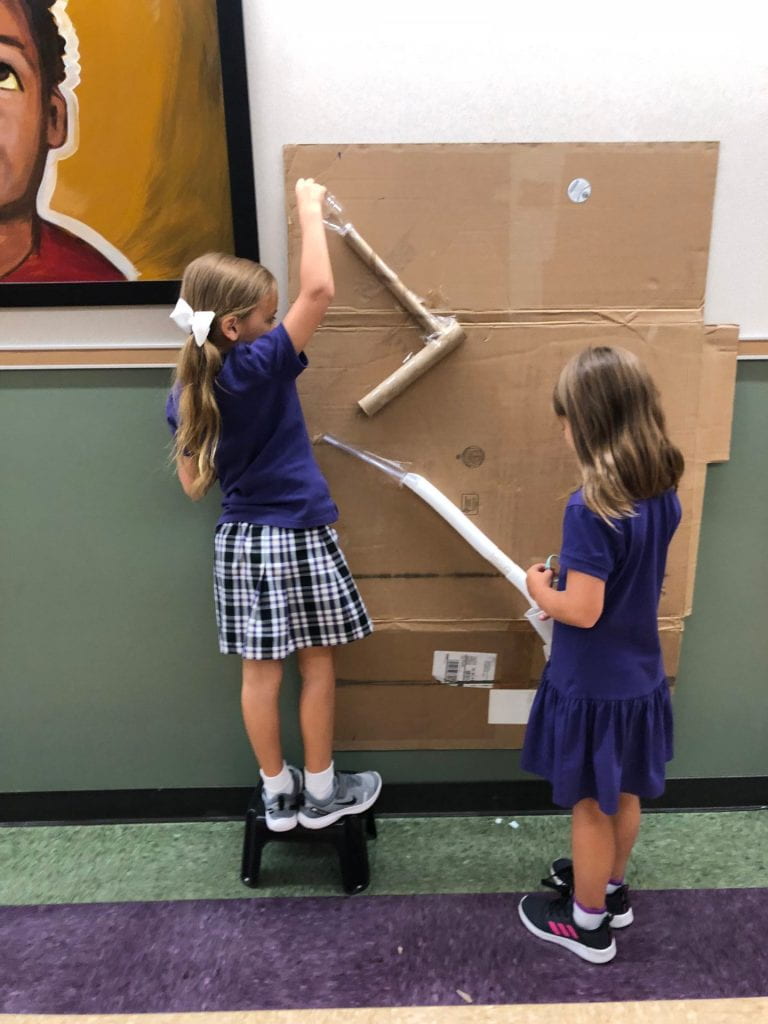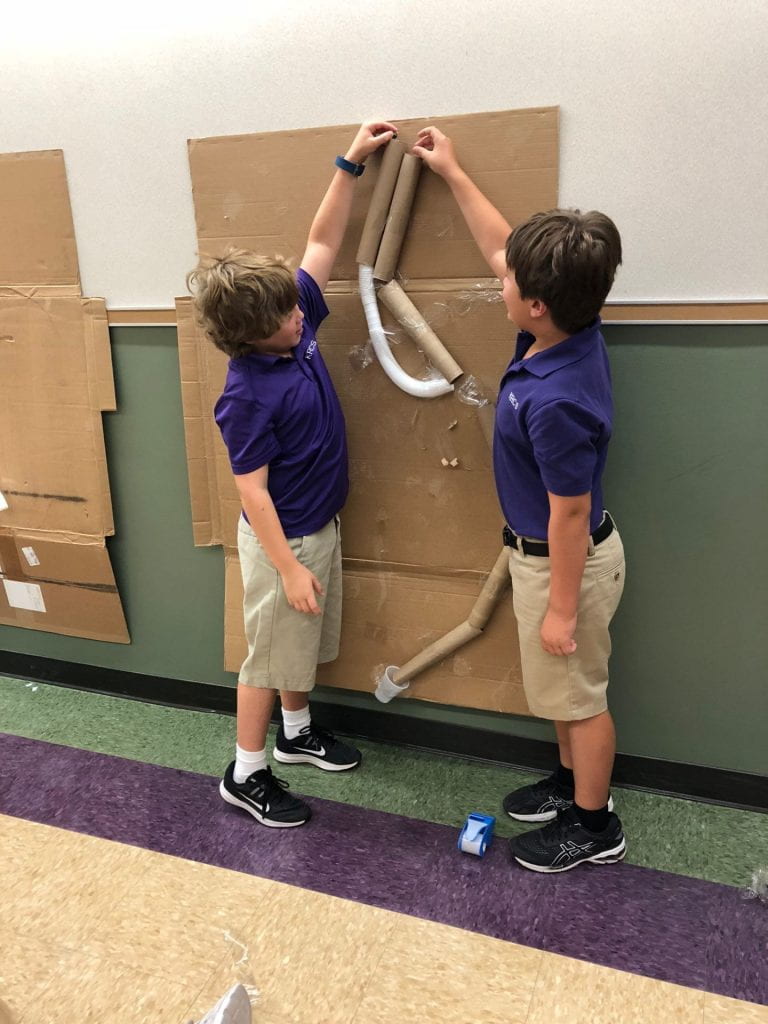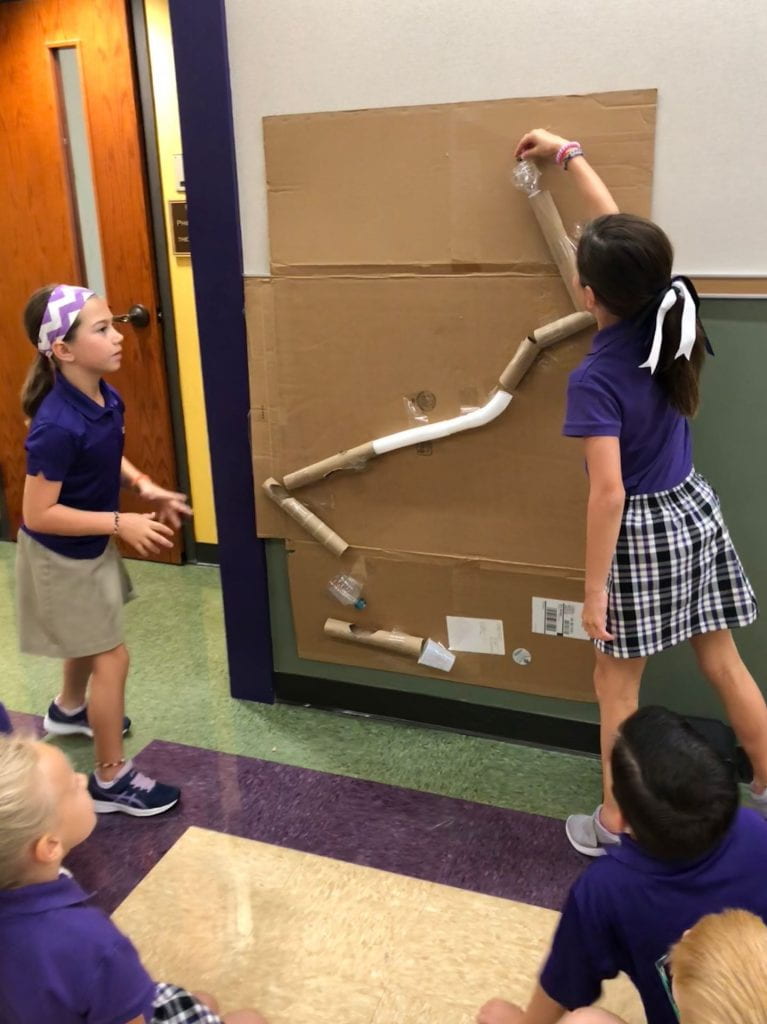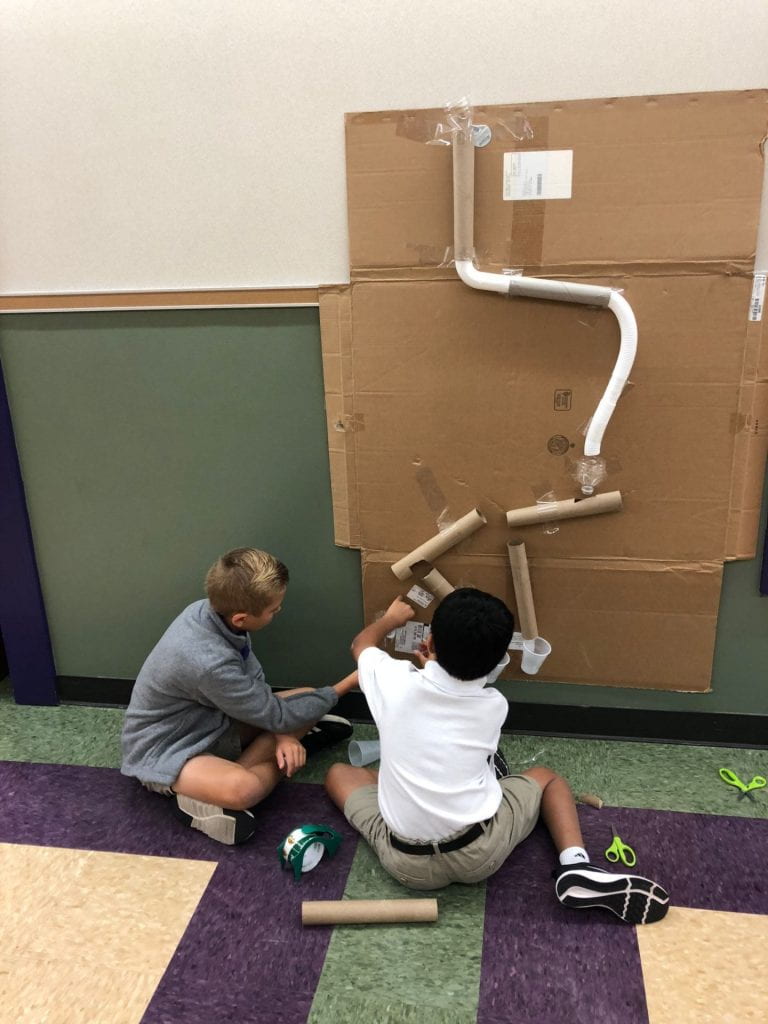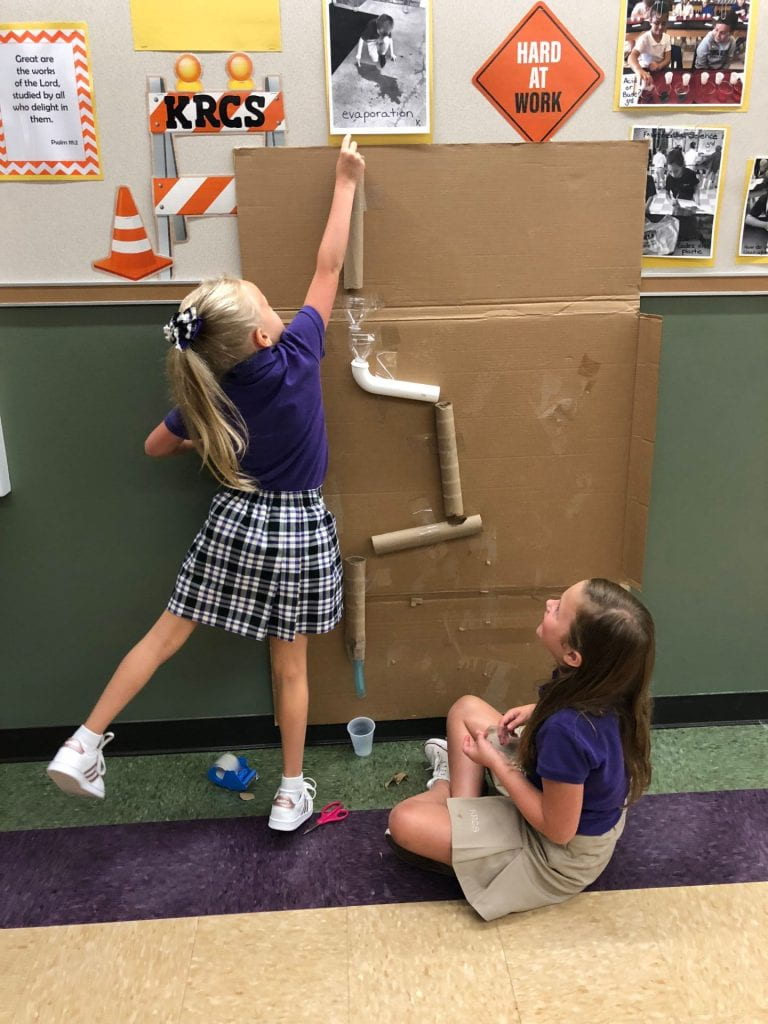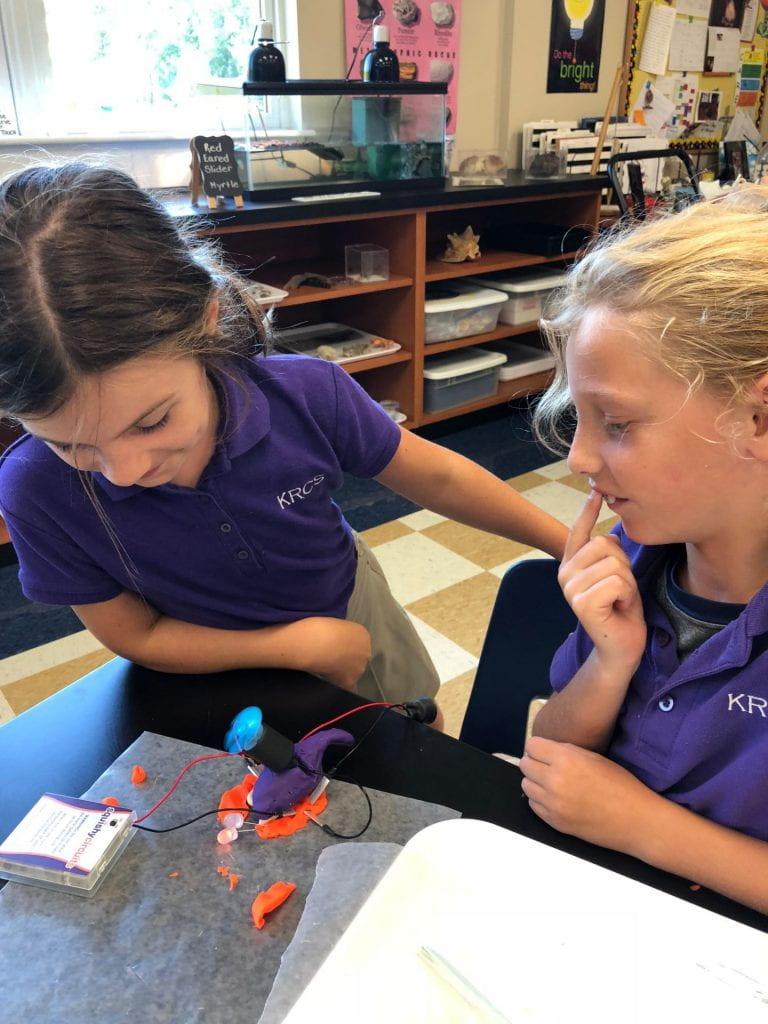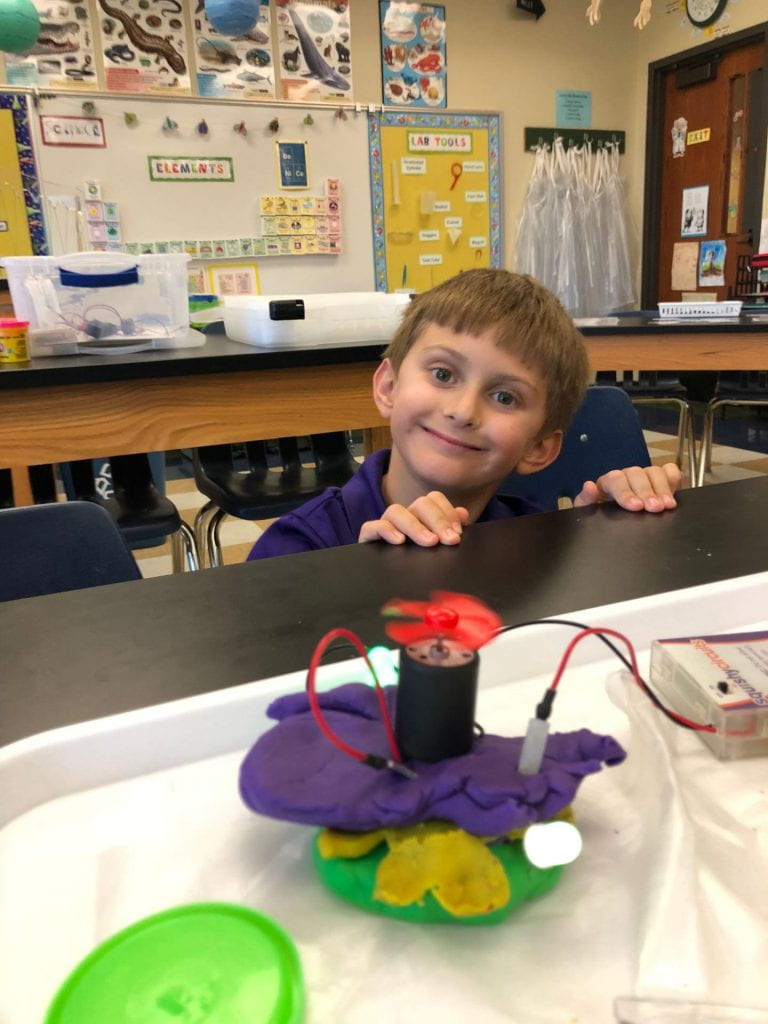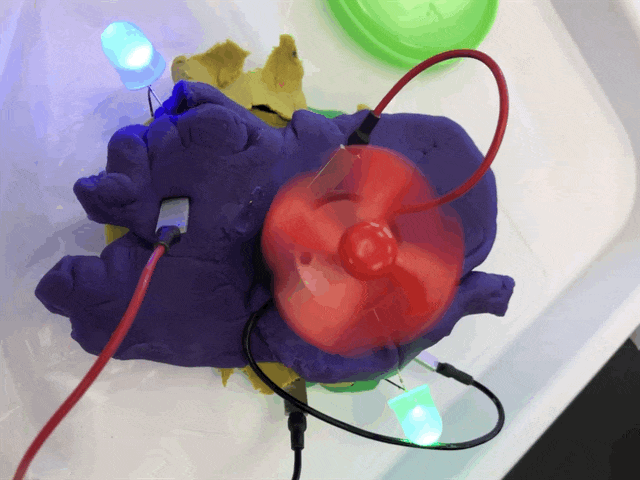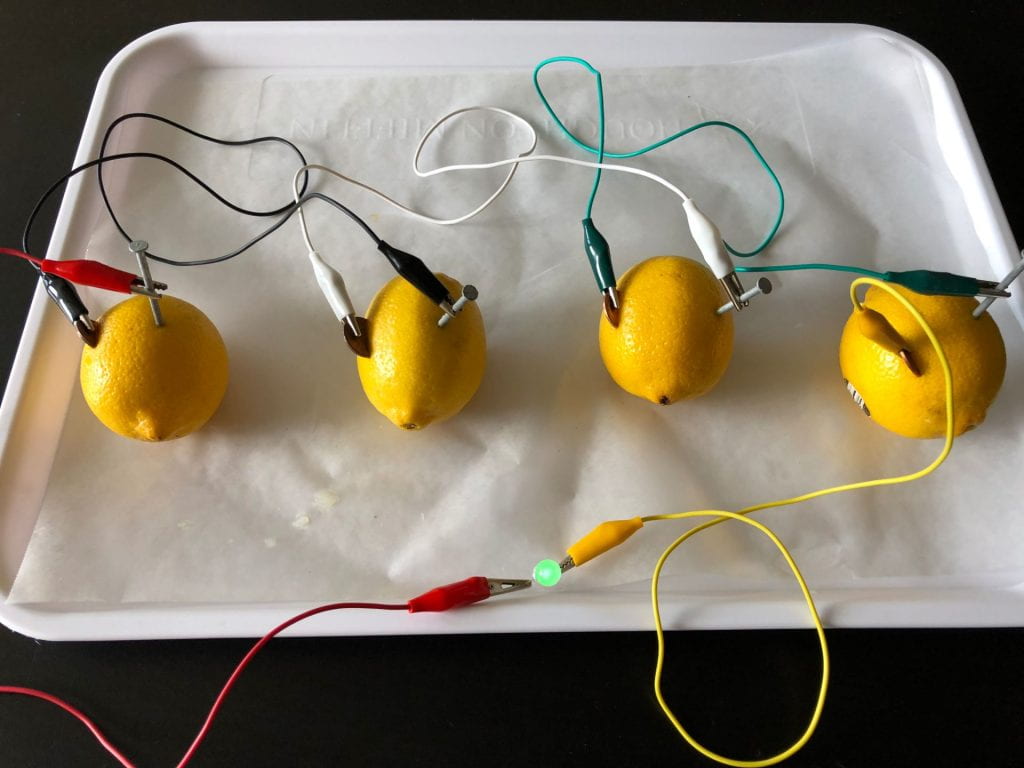Dot Day
KRCS students celebrated International Dot Day.
Pre-K scientists experienced how blacklight (ultraviolet light) can change the way things look. We drew dots with highlighters on one side of yellow paper and wrote our names on the other side, but they were hard to see. Then we took those papers into my walk-in science closet. When I turned on the blacklight bulbs, our dots appeared! We also noticed that other things in the closet seemed to be glowing, like the fluorescent stars on the ceiling. It was a pajama dress down day too.
Energy Efficient
Third grader environmentalists are learning what it means to go green! We looked at the cartons of the two light bulbs below and compared the information:
We realized that an energy efficient bulb:
- Uses about 70-90% less energy than traditional incandescent bulbs
- Lasts 10 to 25 times longer and saves $30 to $80 in electricity costs over its lifetime
- Produces about 70-90% less heat, so it’s safer to operate and can cut energy costs associated with home cooling
We proved the efficiency of the bulbs by placing heat sensitive sheets behind them. The bulb that uses more of its energy for light, didn’t release much heat onto the sheet. Look at all the colors that were displayed on the heat sensitive sheet from the less efficient bulb.
Composting
As part of their living and nonliving unit, first grade scientists reused plastic bottles to make planters for marigold seeds. We learned about compost and placed a piece of newspaper, a green leaf, a banana peel, and a stick in the soil. How long will it take for them to decompose? We looked at a plant’s life cycle and reviewed what living things need to grow. This was a great introduction to their environmental unit as well. Click here to watch a child friendly video about composting. Watch for updates.
Creature Feature
Visitor
Sound- Part Two
Kindergarten scientists continued their investigation of sound. I demonstrated how a thunder tube works. Click here for an explanation. Then I explained that talking cups work in a similar way. I wet the string hanging from the cup, and slid my wet fingers down the length of the string. The sound traveled up the string and was amplified inside the cup, like a speaker. Click here for more information about this investigation. Then we tested how the sound changed with cups of different sizes and materials. What would happen if we tried different kinds of string?
Next, we swung sound tubes. The faster we turned the tube, the higher the pitch. Click here to learn more.
Leaf Veins
Second grade botanists began their plant unit with a leaf lab. The word of the day was diversity. Even the leaves from the same tree had differences. We observed plant leaves that were a variety of sizes, colors, shapes, patterns, and textures. I brought in some leaves from my garden and purchased new plants for the lab.
Leaves have veins which transport oxygen, nutrients, and water. To watch how veins transport water, we placed Napa cabbage in colored water. An important reminder that what we place in the ground goes into the food we eat! Click here to learn more.
We noted that we also have veins and they serve the same purpose in our bodies.
We investigated the patterns of veins on a variety of leaves and traced them with Sharpie markers. Some veins alternated from the midrib and others were directly across from one another. The Sweetgum tree has veins that radiate from a central point.
Marble Runs
Engineers use science and math to solve problems in a creative way. Third grade engineers reviewed force and motion concepts and the Engineer Design Process before constructing marble runs out of recyclable materials- a perfect connection to their current environmental unit. I challenged them to try to construct a run with four turns and at least one jump. This is a challenging task, and students worked collaboratively to solve the problems they encountered during the process. Vocabulary included accelerate, momentum, and inclined plane.
Try this at home!
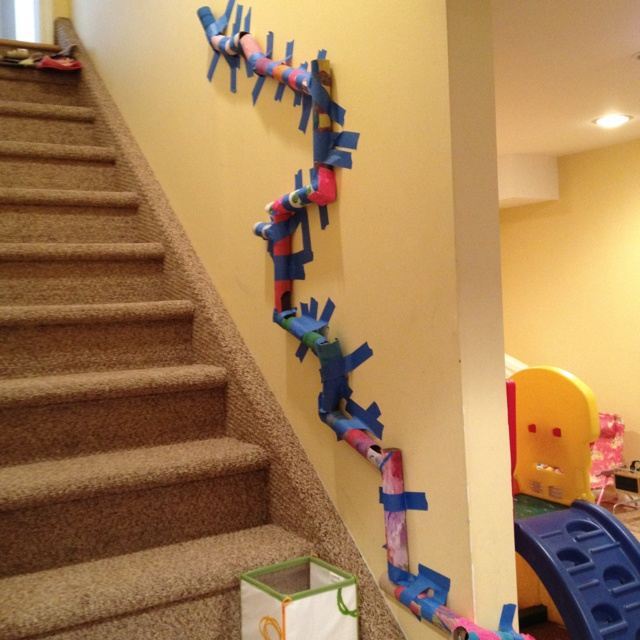
Electricity – Part 3
Lab began with an introduction to simple, parallel, and series circuits. Then, second grade electrical engineers applied their knowledge of circuits from the previous two labs to create squishy circuits with propellers, buzzers, and switches. Click here and here to learn more about squishy circuits. (We did not watch these in class, but I taught most of these concepts.)
I also demonstrated how to use potatoes and lemons to create a current. Click here to learn more.
